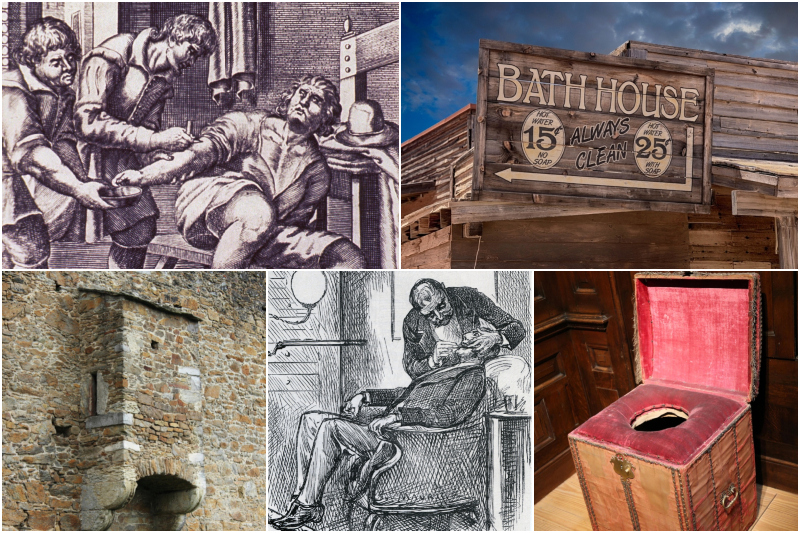
The Middle Ages, in turn, opened up to the Enlightenment, and that finally brought science and medicine and civilization in general. So, how did Medievalists live? What were their personal habits like? Did they bathe? Read on to learn about all of the gruesome details of life in the Dark Ages.
Medieval Dental Plans
In the Middle Ages, dental insurance did not exist. Toothaches caused by tooth decay were handled by the local barber who used his tools to pry the rotted tooth out the person’s head without the use of Novocain or any other anesthetic. But medieval commoners were not bereft of dental hygiene practices.
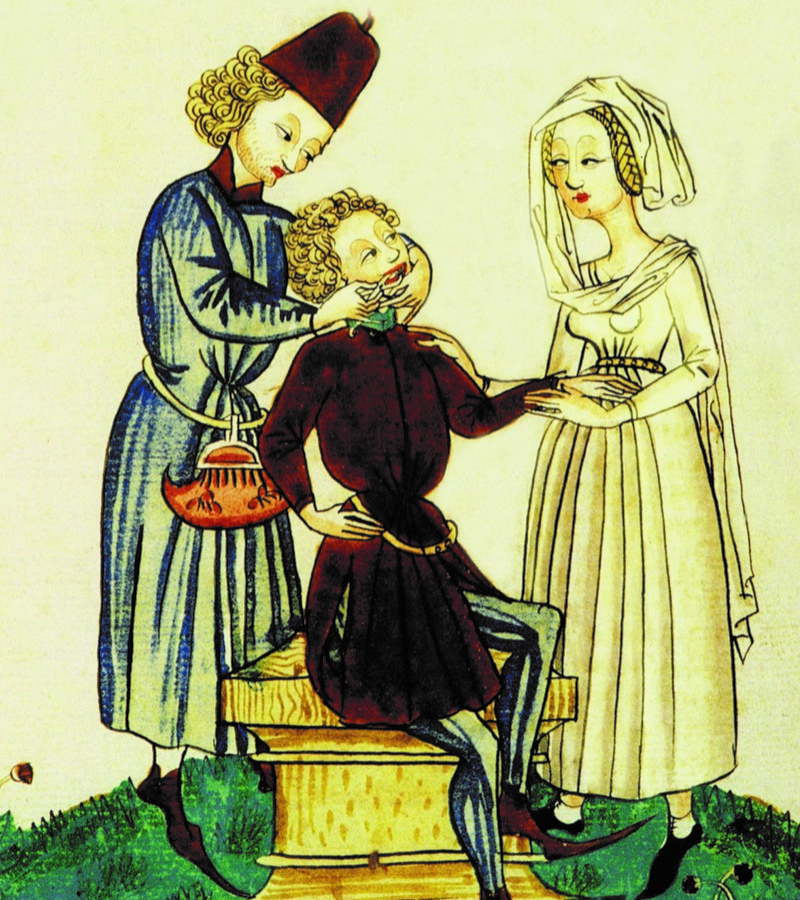
To keep teeth white and clean and to stay away from the dreaded barber, the common practice was to wipe down teeth with a rough woolen cloth. And, there is evidence that toothpaste and mouthwashes were used. As it turns out, people in the Middle Ages cared about white teeth and fresh breath too! Chewing on mint or cloves was common for this purpose.
Cutlery
Another tool we take for granted in the 21st century is the lowly fork. In the Middle Ages, forks were disdained. European peasants used their hands, while royalty was aided by spoons and knives made of precious metals. Yet, hands were used. At a wedding for a Byzantine Emperor’s niece in 1004, the bride was excoriated for using a fork.
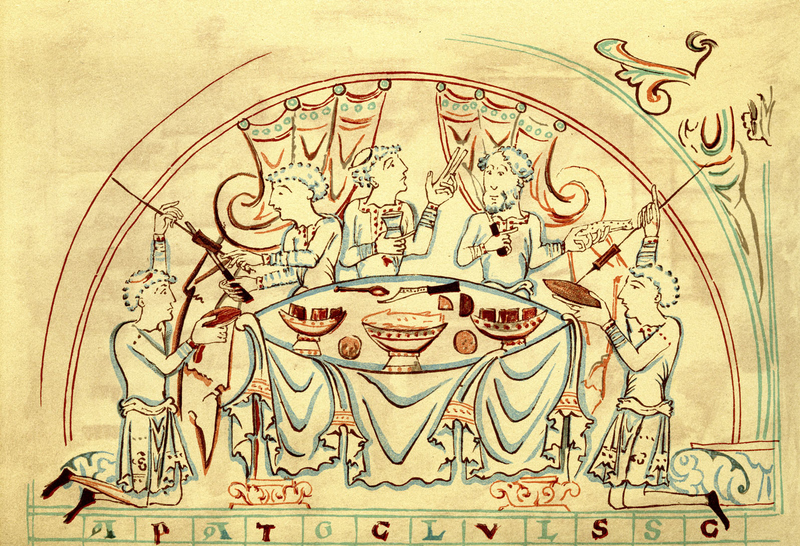
Despite stereotypes like “the filthy peasantry,” these people followed codes of etiquette that included washing in the mornings and before and after meals. Royalty also followed etiquette guidelines, like, not picking one’s teeth with the point of their knife.
Medieval Floorings Harbored Filth
Floors in the Middle Ages were devoid of the plush comforts of carpeting and instead were layered with wall-to-wall rushes. So, on what was essentially a dirt floor, a layer of grasses like hay covered the clay surface. Sometimes they would be woven into mats. The rushes were replaced from time to time, which might have been a good thing, but the old trodden layer beneath harbored all kinds of contagions.
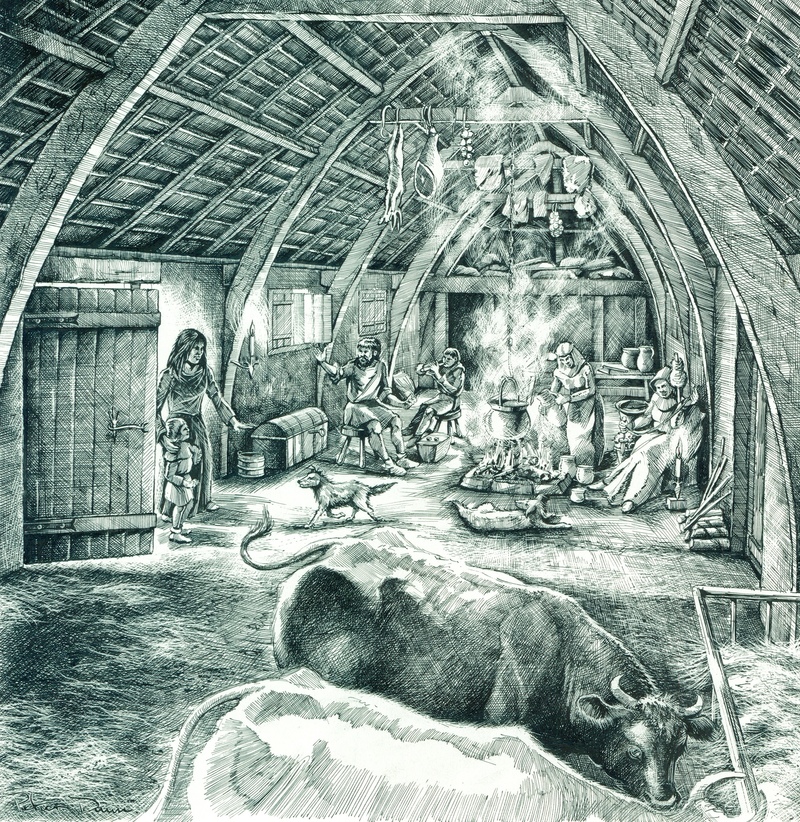
Measures were taken to keep floors fresh by adding flowers or pleasant-smelling herbs to the rushes. But, lurking beneath, fleas, lice, and vermin thrived. We all know now fleas on rats passed the Black Death to humans.
Taking a Bath in the Middle Ages
Some monks were only allowed one bath per year, while kings bathed often in personal tubs filled with hot water and aromas of flowers and fresh herbs like chamomile, mallow or brown fellow. The common peasant would have loved such luxury, but they were relegated to public bathhouses that some church leaders prohibited, thinking group nakedness leads to illicit sex. They had a point; some bathhouses were mere fronts for brothels. But Medieval bathhouses were popular, some offering a meal with a warm wash.
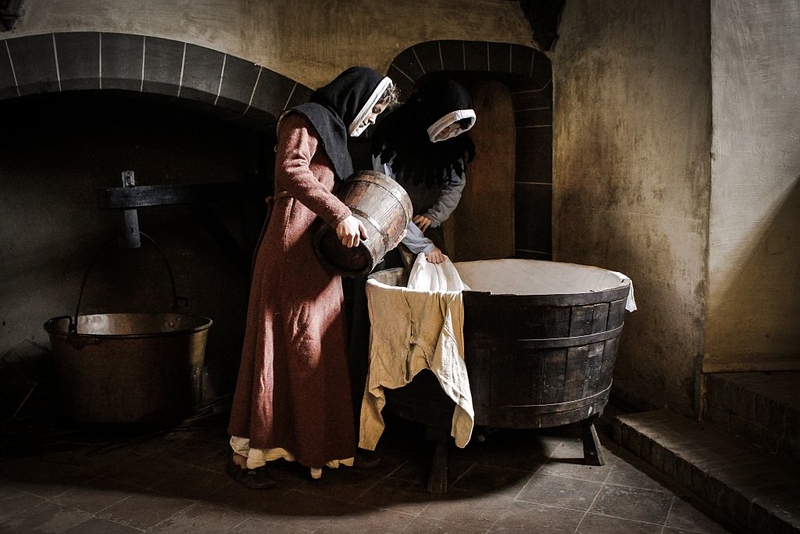
People liked to bathe at least once a week. After the Black Death, bathhouses went into decline. Erasmus explained in 1526, “Twenty-five years ago, nothing was more fashionable in Brabant than the public baths. Today there are none, the new plague has taught us to avoid them.”
Medieval Surgery Was Often Fatal
Hospitals in the Dark Ages were reserved for the sick or dying. More like hospice care than modern hospitals, the blind, the desperate, and those with spiritual needs stayed in hospitals. If surgery was required, people went under the knife at the barbershop, where a barber (or a butcher!) would try to allay ailments like ulcers, kidney stones, and eye cataracts.
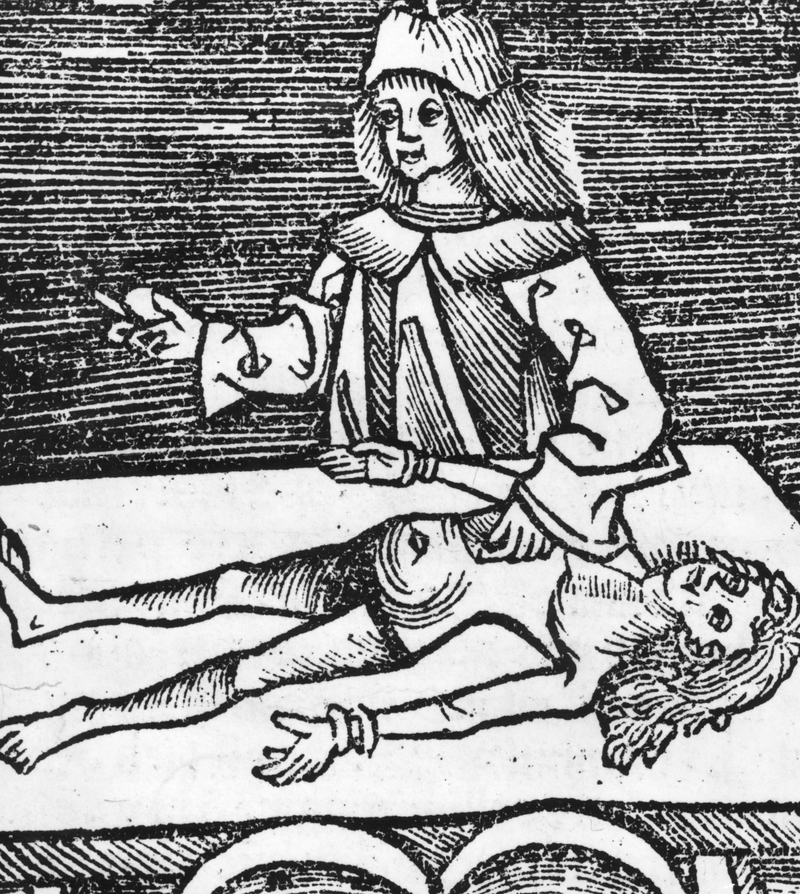
As an interesting tidbit, the signature striped poles outside of barbershops represent the color of blood and the white of bandages characteristic of medieval surgery. Again, anesthetics were not used, and instruments were not sterilized. Unsterilized tools would cause fatal infections.
You’ll Never Guess What They Used Urine For
Throughout history, urine has played a surprisingly versatile role in cleaning practices. Due to its high pH level and ammonia content, this bodily fluid has been used as a cleaning agent since ancient Rome. In fact, the affluent aristocracy went so far as to employ urine as a facial exfoliator, directly applying it to their skin. It was considered comparable to lye, an alkaline substance for general cleaning purposes.
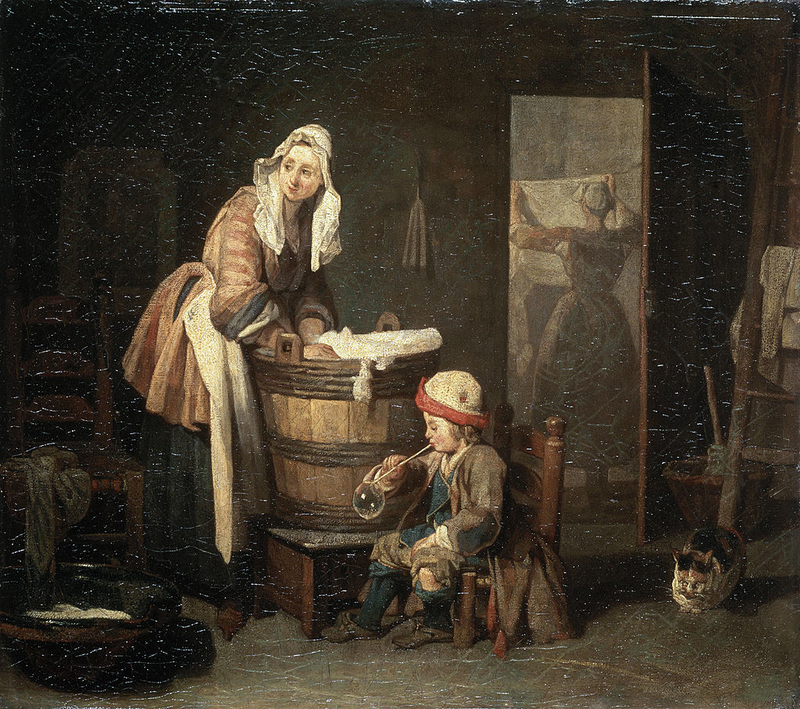
Even wound cleaning involved the use of urine. However, its most common application was in the realm of laundry, where it served as a spotter to effectively eliminate stains. Medieval laundry soap often featured ingredients such as ash, lye, green grapes, and urine.
Shaving Was Not a Thing in the Middle Ages
Short of mirrors and razors, most peasants did not shave. Some were shaved once a week at the barber, although that wasn’t free, and peasants lived in poverty. Besides, beards were trending in the Middle Ages. A full face, of course, hair was a sign of virility. Shaving was very inconvenient. Mirrors were made of polished metal or blackened glass, which was not conducive to shaving. Maybe that’s one of the reasons monks would shave each other.
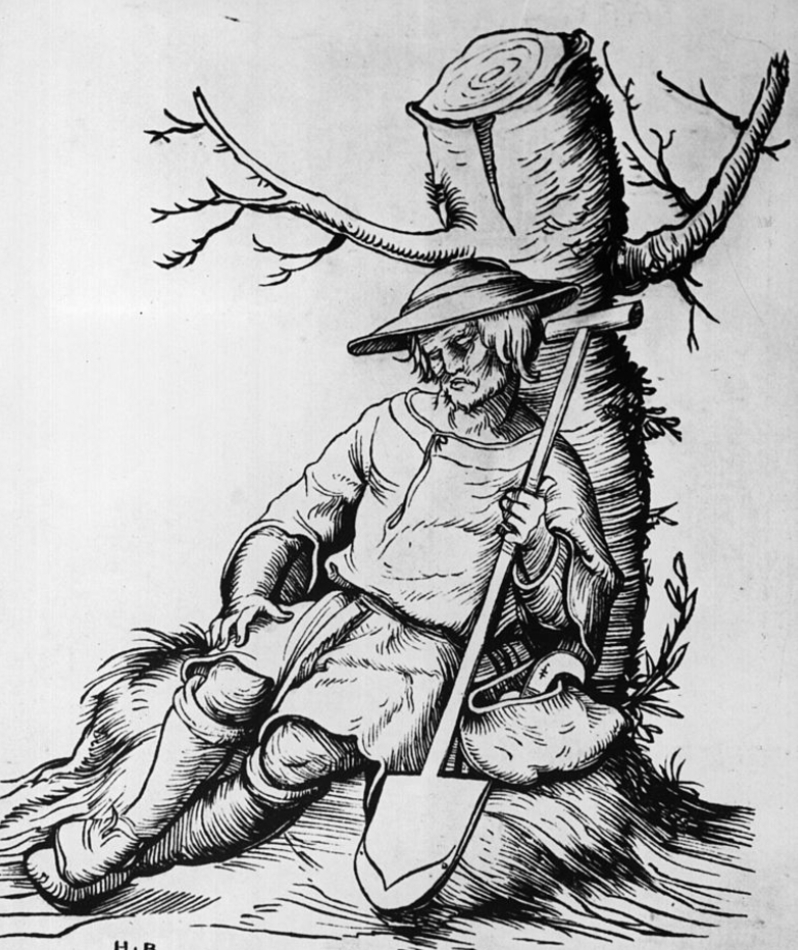
Modernity challenges everything. Now that beards are back in vogue, a 2016 study found that clean-shaven men are three times more likely to be harboring the harmful bacteria methicillin-resistant staph aureus on their cheeks than bearded men. It even suggests new penicillin might be made from beard bacteria!
Most Medieval Europeans Slept in Squalor
Those of the wealthy aristocracy owned splendid beds with protective canopies stuffed with feathers and covered with fine linens. Landowners also slept in clean peace. Peasants knew no such indulgence. Recall the flooring made of straw and infested by pests. The bedding was also made of straw, piled up into a mattress, which was sometimes woven tightly into a bed. Not all beds lay flat. Medieval commoners often slept on a sloping bed, like a recliner.
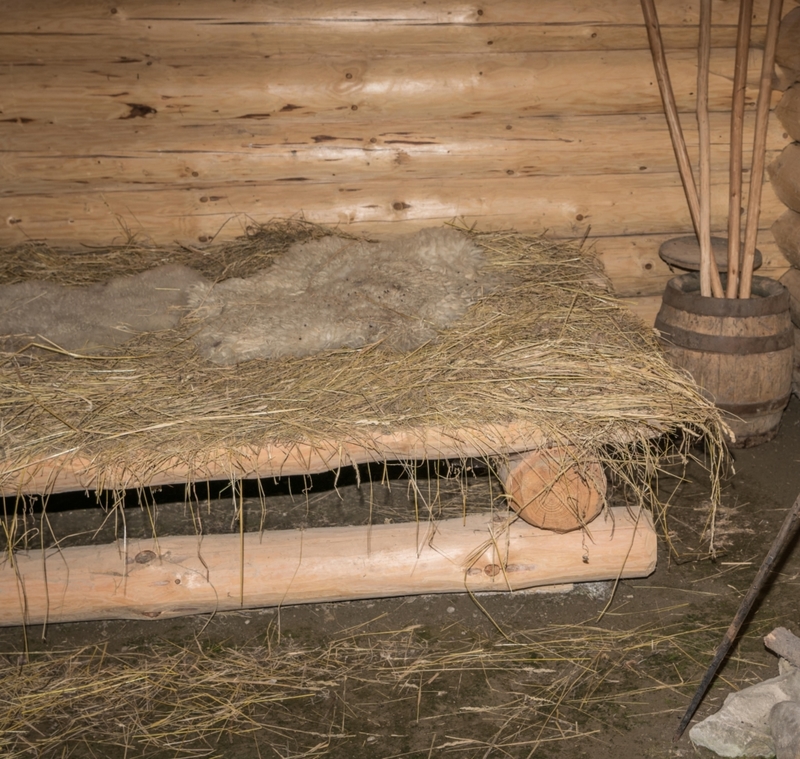
It sounds comfy enough at first glance, but the mattress—which was only changed and replaced yearly—was teeming with fleas, lice, and bed bugs. Fur covers, and feather bedding, while warm, also attracted parasitic pests like fleas.
Medieval Castle Garderobes Weren’t Used for Clothing
In Medieval castles, protruding masonry walls called garderobes were actually bathrooms because they are similar in size and shape to wardrobes. The room protruded from the castle walls so that the deposits one made upon relieving themselves in the garderobe could fall through a hole into the moat. Depending on the castle's occupancy size, moats may have developed quite a stench.
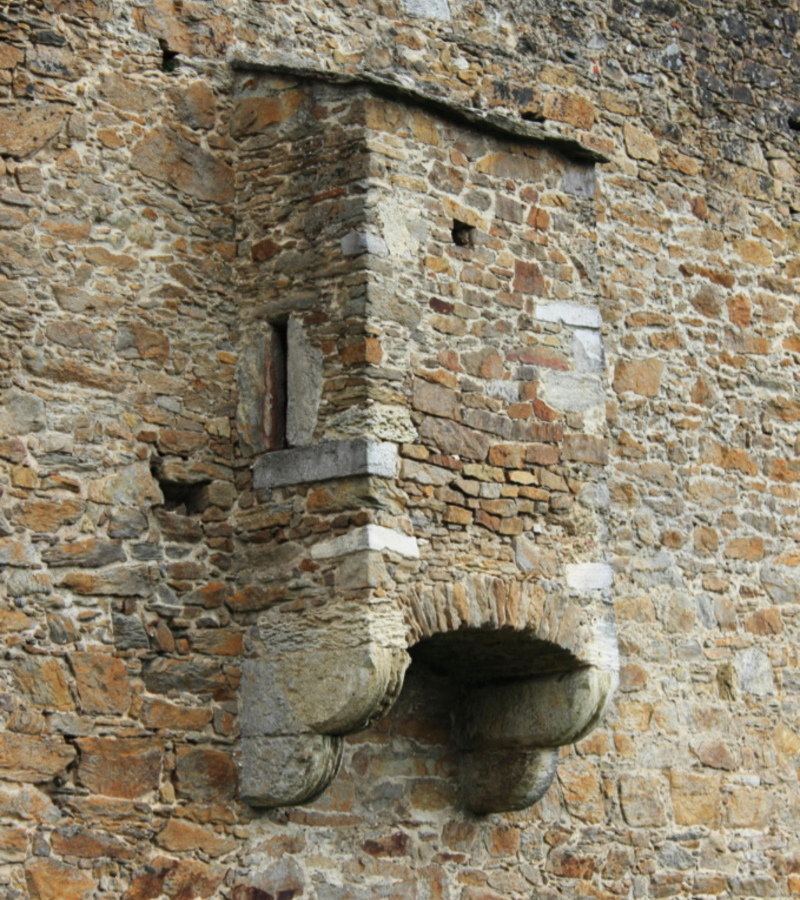
Public sewer systems were not a thing in the Middle Ages. They were completely absent. When the Roman Empire fell, so did aqueducts, sewage systems, and basic sanitation. In fact, it took centuries for Medieval cities and towns to transition to working urban sanitation systems, and that did not happen until the Enlightenment.
A Peek Inside a Garderobe
Let's take a closer look at the Garderobe latrine, a fascinating historical feature. This peculiar toilet design is quite intriguing. Instead of flushing, a hole is present, leading directly to the surrounding moat. Surprisingly, the accumulated excrement played a vital role in deterring enemy infiltrations, an often overlooked aspect of a moat's military defense strategy.
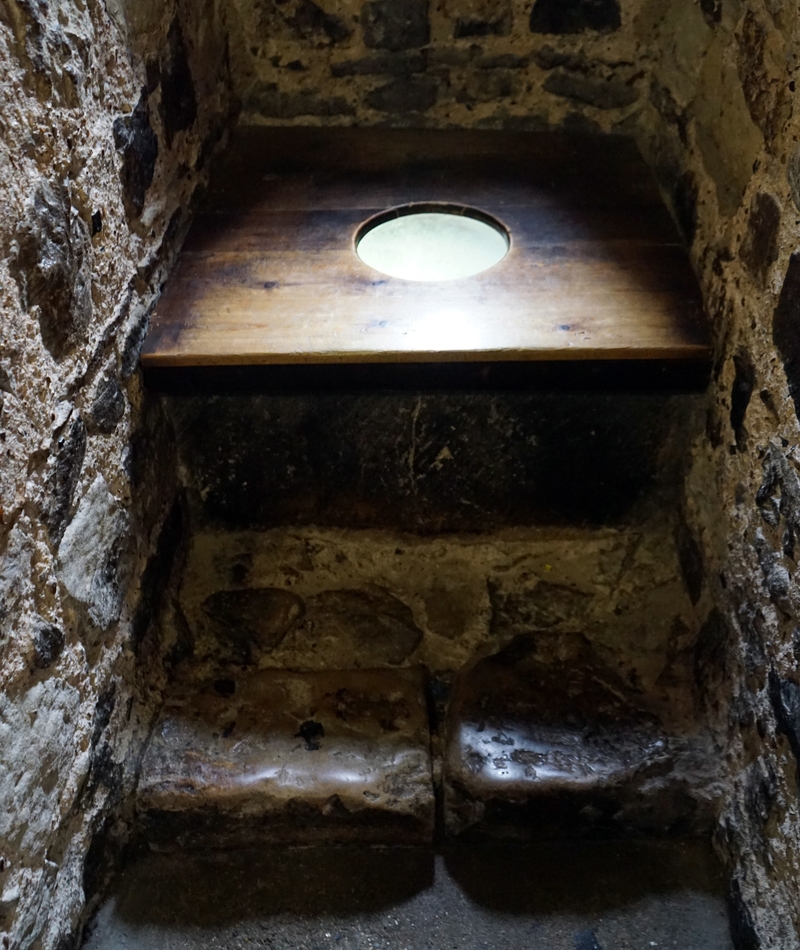
Interestingly, monasteries had similar-looking toilets, although the number of potty holes would usually not exceed 45. On the other hand, commoners shared public latrines, just like the monks, without any privacy whatsoever. These public facilities were regularly emptied into a cesspit, occasionally repurposed as fertilizer for agricultural needs.
The Chamber Pot
Tip: don't eat while reading this. Besides public toilets, people used chamber pots inside their homes, usually stored under beds. It’s a disgusting but true fact that these chamber pots were not uncommonly dumped out windows onto walkways.
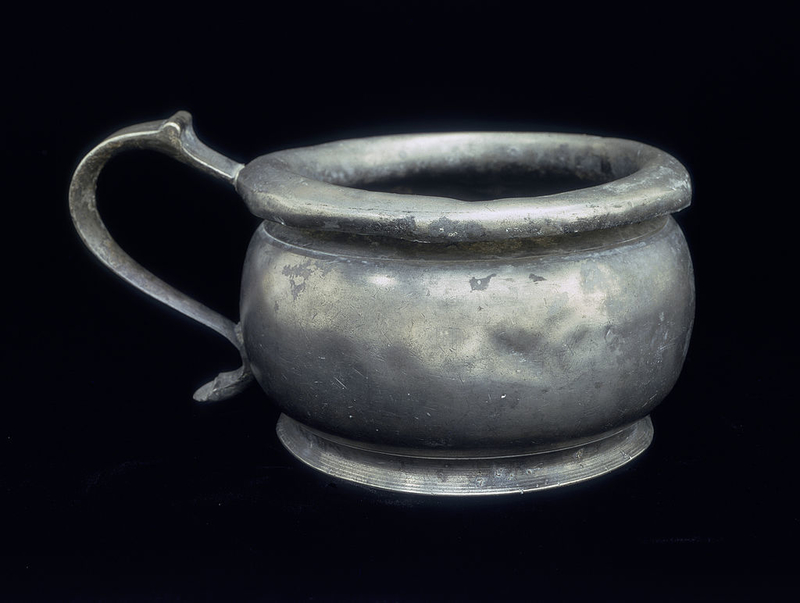
At night, the smelly excrement stayed under the bed. In the morning, watch out! From upper stories, passersby walking beneath had to be careful. Toilet paper was not invented yet, so, moss, leaves, grass or straw might do the trick. In fact, toilet paper would only be invented in 1857, and consumers would have to wait til 1890 for it to be commercially available.
Medievalists Had A Cure for Baldness
Good news, right? Here’s the cure: “Take bear fat [i.e. kill a bear without a pistol], a small number of ashes from wheat straw or from winter wheat straw, mix this together and anoint the entire head with it.” This is according to the 12th-century scholar Hildegard. Another treatment included mixing chicken or pigeon droppings with ashes and lye and rubbing it on the bald spot.
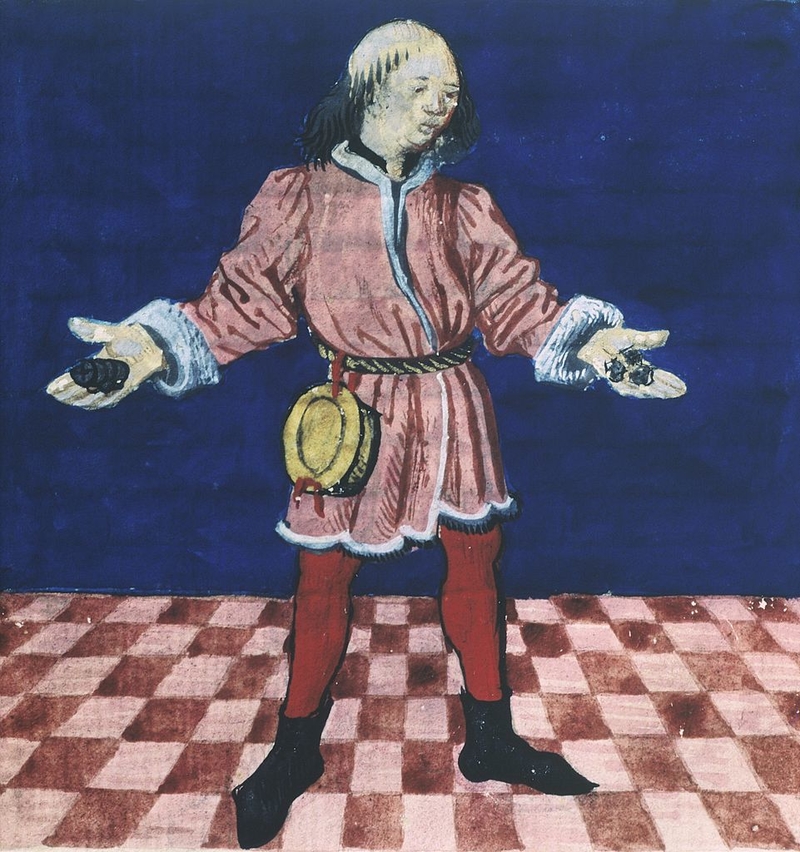
In the Middle Ages, though vanity, as today, preferred a nice head of hair, a wide bald spot did represent virility, as long as the man grew a thick beard. A man without a dense beard, but chocked with abundance on top, was considered weak.
Bloodletting: The Cure-All
Be thankful that modern doctors won’t try to cure your illness by attaching blood-sucking leeches to your flesh. Besides applying leeches or worms to draw blood from the patient, opening a vein directly with an incision to alleviate excess blood in the body was also practiced in the Medieval period.
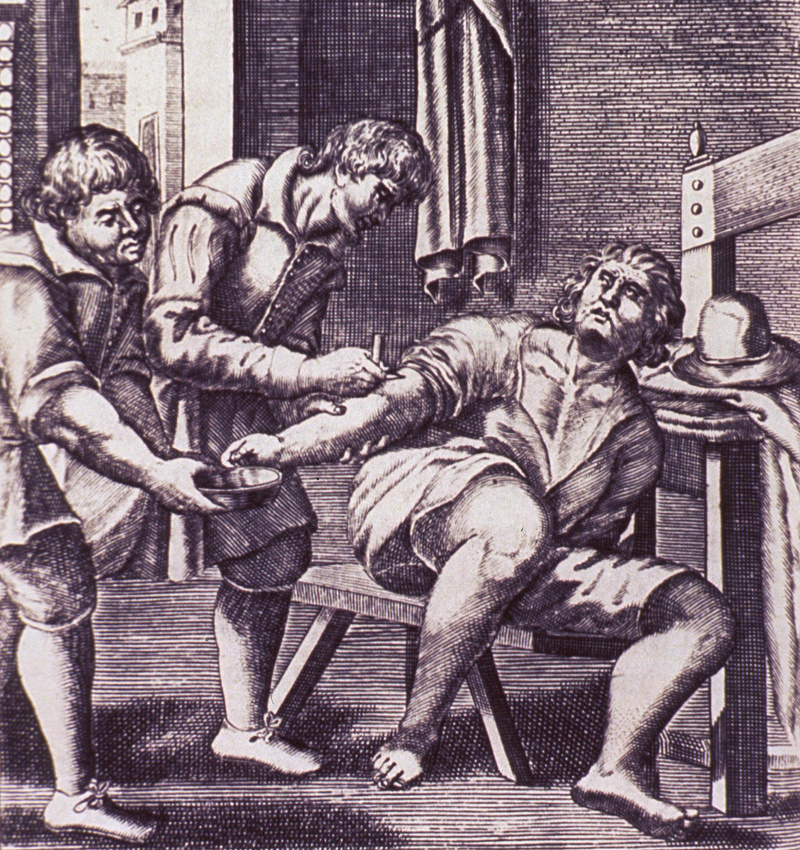
If these methods failed, physicians might try charms, totems, or amulets, which make sense when you know that the Christian church believed sin was responsible for diseases. Still, 'sense' is a stretch. This practice lasted centuries after the Middle Ages, and it was even the cause of death for President George Washington.
Trepanning: The Medieval Lobotomy
Trepanning is a barbaric form of medical treatment from the Middle Ages. Intended to cure mental illness, migraines, epilepsy, and other brain ailments, some patients survived the so-called cure. The procedure entailed drilling into the side of the patient’s skull, without anesthesia, to expose the outer membrane of the brain.
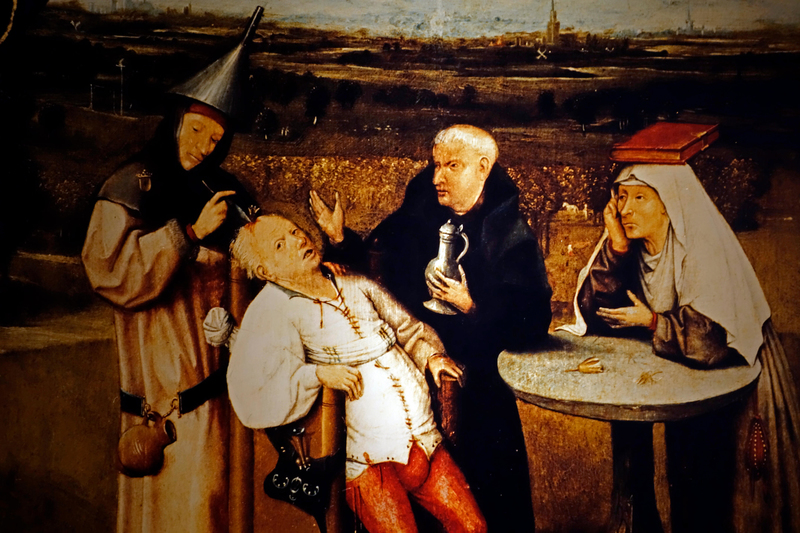
As the oldest form of surgery known, predating the Medievalists by thousands of years, it was thought to relieve pressure in the brain so that “the humors and air may go out and evaporate.” Yeah. We guess, when you're working with next to no concrete knowledge of how the human body works, this wasn't such a leap.
His Royal Throne
The king’s padded potty was tended by a loyal servant. Known as “The Groom of the King’s Stool,” the coveted position required moving the throne from place to place so it could be at the king’s constant disposal. Duties also included wiping the royal bum whenever the king relieved himself. Towels, water, and a washbowl were at hand.
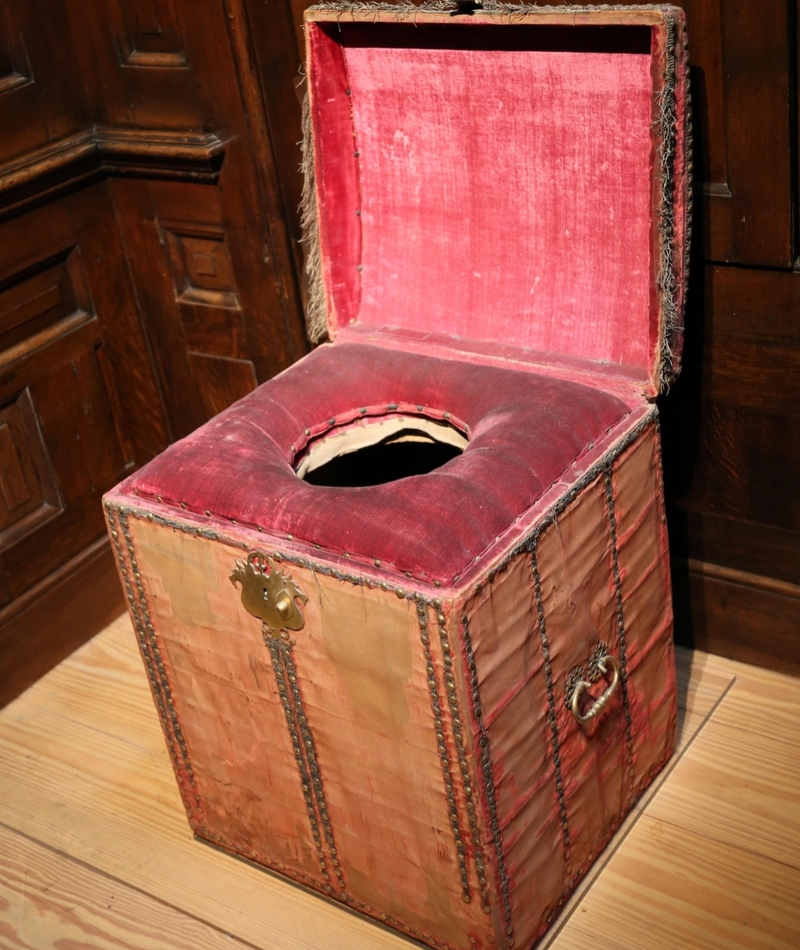
The keeper of the Stool was one of the king’s closest confidants, highly compensated, and usually a son of noblemen. His duties often led to higher positions. The bedazzled porta-potty was invented for King Henry VIII and wasn’t abolished until 1901 by King Edward VII.
The Canopy Bed was Invented in the Middle Ages
The first canopy beds were suspended from the ceiling, with the canopy and drapes covering and surrounding a bed for privacy and warmth. In the 15th century, four-post beds were coveted and the curtains, sometimes embroidered of fine heavy cloths, were very expensive. We know they were valuable because wealthy landowners often included these beds in their wills.
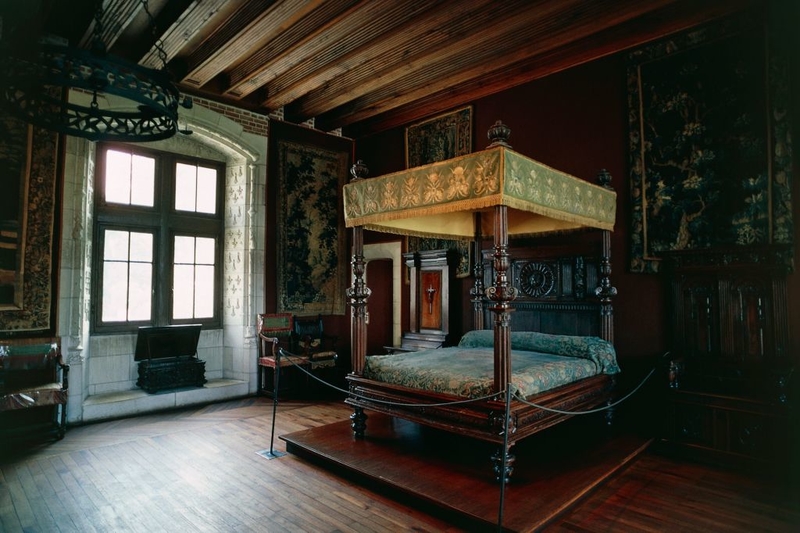
Since roofs were thatched in these days, it is assumed that canopy beds served an additional purpose which was to protect the sleeper from droppings from the ceilings, ranging from water to pest excrement. It was a useful invention, no doubt, and nowadays we can enjoy canopy beds for the aesthetic, and thankfully not the practical use.
Lice Thrived in the Dark Ages
Lice were so prevalent and so ubiquitous in Medieval times that people could not escape it. What they called “worms with feet” were a part of life, so much so that medical experts believed lice and other parasites were produced by the body at certain times. Lice were everywhere, not just in hair. Some swarmed around eyes.
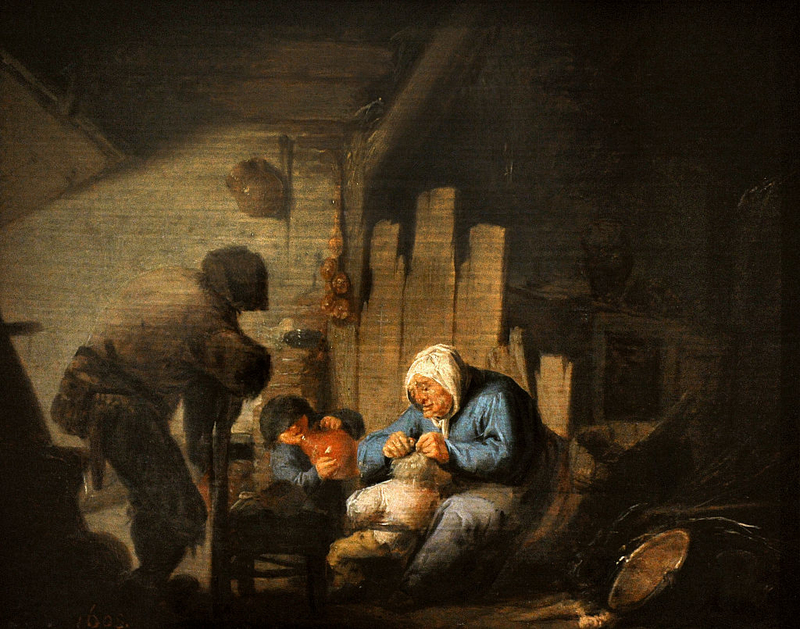
Far from lice only afflicting the peasantry, Pope Clement V was reported to have a cavity in his tooth where a louse tossed about. King Henry IV’s head was found squirming with lice by Adam of Usk who crowned him in 1399.
The Black Death was the King Kong of Plagues
The medieval period was racked with epidemics, plagues, and disease, but none were as merciless as the Bubonic Plague, or what we know as the Black Death. Between 1328 and 1351, it tracked trading routes, wiping out a full 50 percent of Europe’s population, killing 200 million people. That is equivalent to the entire U.S. population in 1967. Life expectancy plummeted to age 17.
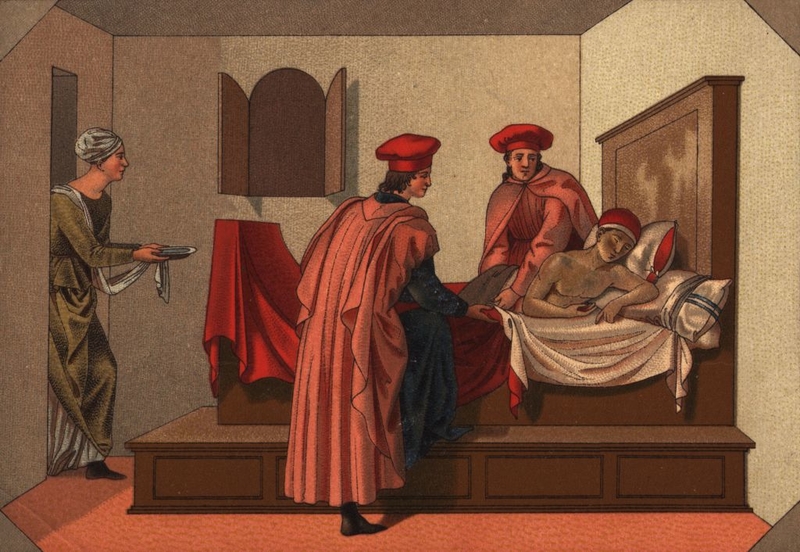
The pandemic brought symptoms that included high fever, delirium, vomiting, bleeding in the lungs, and, most notably, painful swelling in the lymph nodes. The painful swollen boils in the neck turned red and eventually black—large black boils oozing with pus and blood—hence the name. It was transmitted by fleas on vermin to humans.
When it Rained it Reeked
Since the first municipal sewage systems were not built until the 1840s, waste removal of human and animal excrement in medieval towns was abysmal. As we’ve said, it was nonexistent. Of course, castles had moats, others had the Thames, but peasants in fields dumped their chamber pots out in the pathways.

As disgusting as that was, the rain made it worse. Dirt and cobblestone streets became rivers of sludge and urine, washing the filthy stench through town. It really was as bad as it sounds. And we don't mean it took light flooding to cause this; any amount of moisture on the ground exacerbated the issue.
The Stench of the Thames
In all of Medieval England, few places were as rancid and smelly as the banks of the Thames near “Butcher’s Bridge.” Butchers of the day would take bundles of refuge and carcasses to the bridge and dump it in the river. Animal entrails, stinky, diseased animal parts and blood littered the bridge. For 500 years this practice continued.
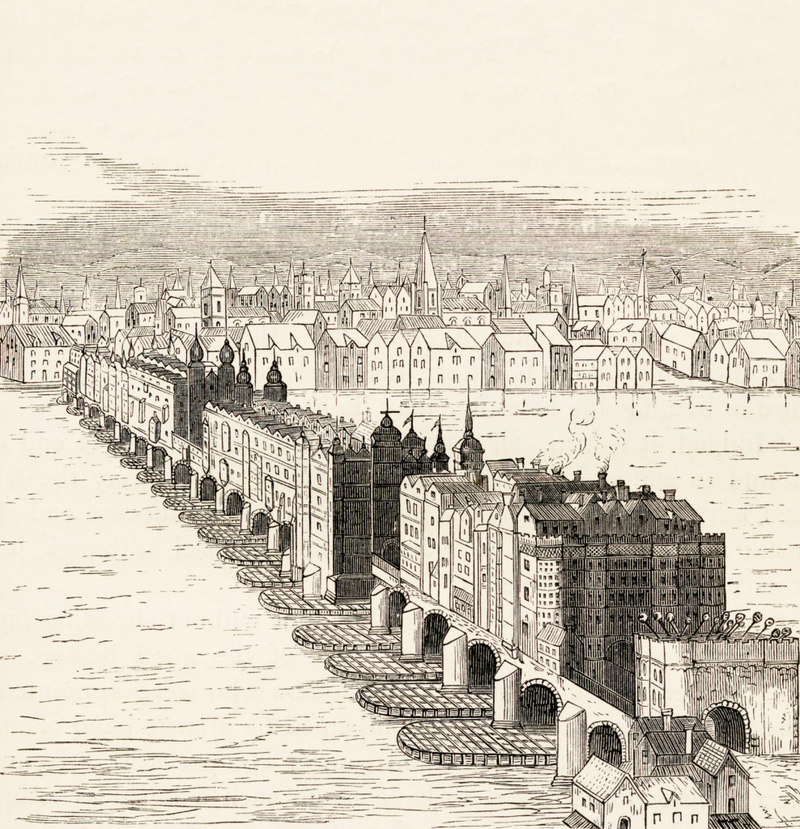
Complaints in 1369 had little effect, a law against it changed nothing. And the stench of rotting flesh made it so that no one could live there. However, not only butchers fouled the waters of the Thames, every Englishman in proximity would dump sewage and waste into the river.
Soup to Stop Spoiling Food
While none of us would like to travel back in time to the Middle Ages, there is one life hack we can borrow from our medieval counterparts. Since the first “true” fridges were made in the early 20th century, medieval people didn’t have many ways to preserve food. Common food preservation practices included using salt to dry out meat or to dunk things in vinegar and syrup to stop them from spoiling.
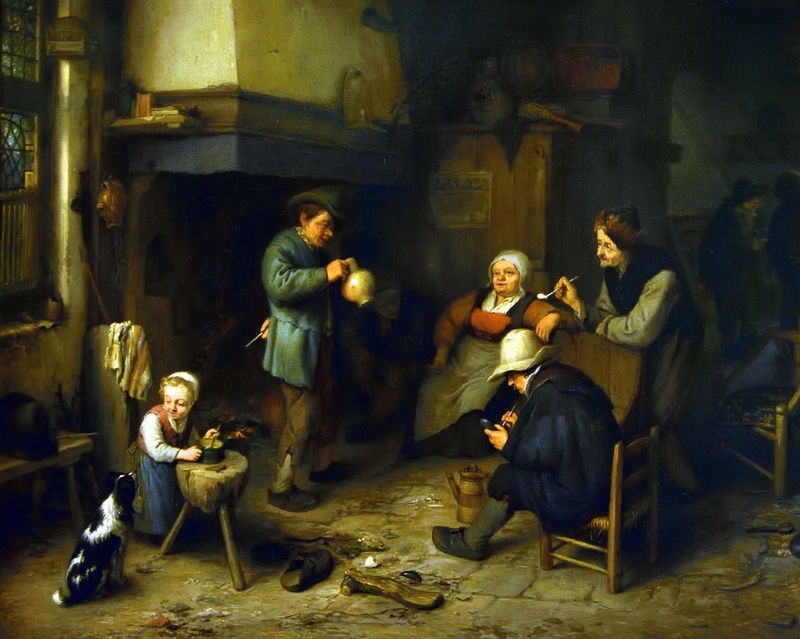
Another common practice was soup. When vegetables, bread, and meat were going off, these folk boiled them in water to save them before they went completely rancid. As weird as it sounds, everything that could spoil could go into a pot, meaning there were plenty of interesting recipes around but probably few we’d dare taste.
Unappetizing Love Potions
In the 21st century, we have dating apps and aromatic fragrances to combat the single blues. In the Middle Ages, they had love potions, sweaty cakes, and an obvious lack of personal hygiene by today’s standards. Of course, there was not just one love potion recipe back then, but a common one was sweaty cakes.
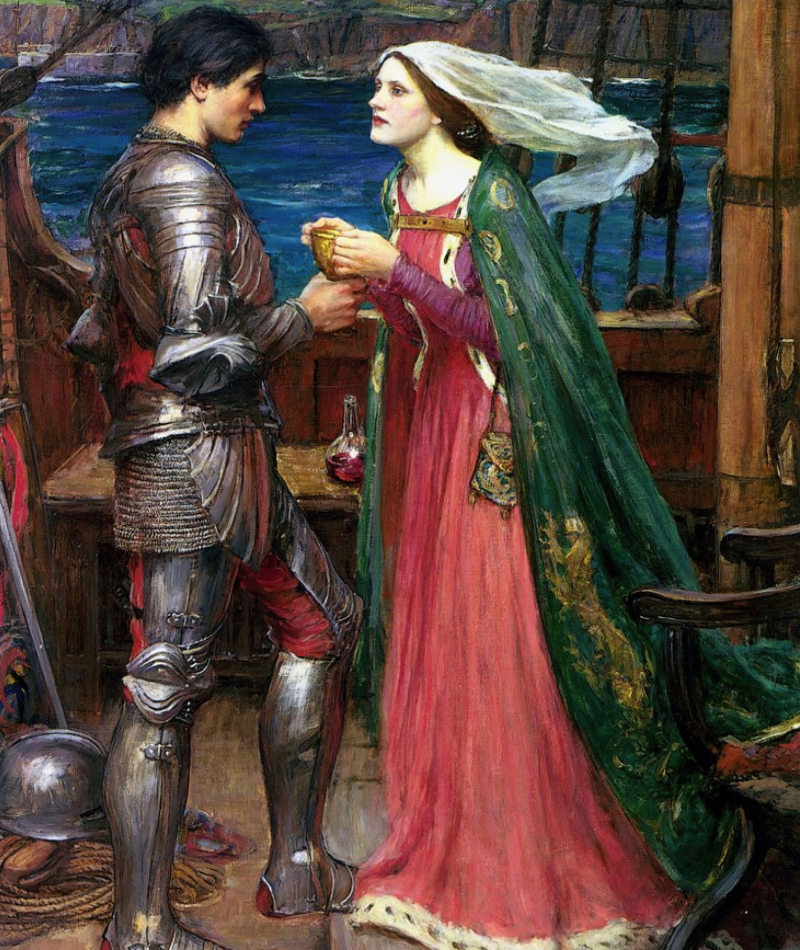
As unromantic as it sounds, if a person back then were vying to capture the attention of their one true love, it wouldn’t be uncommon to see them baking a cake using ingredients like blood, sweat, and other bodily fluids. The rationale behind these “sweaty cakes” was that once the intended sweetheart munched on these “bodily” ingredients, they’d fall madly in love with the owner of the ingredients. It’s probably safer to skip these.
Soap
A lot of us think of the Dark Ages as not only being “dark” but also dirty – and with their personal hygiene practices, we’re not wrong. Though interestingly, our medieval ancestors did use soap. Of course, it’s not the same as what modern people call soap. Typical ingredients for soap were wood ash and animal fat.
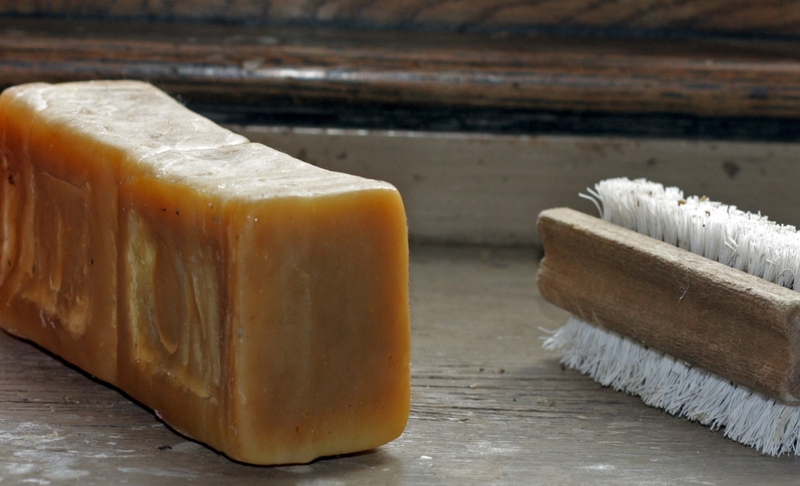
Like modern soap, they were also fragranced with different sweet-smelling herbs like sage and thyme. The use of soap goes back right to the 9th century in Europe, so once people exited the darkest of the Dark Ages (Early Medieval Period), they came up with a basic form of soap and started practicing the most fundamental forms of personal hygiene.
Handwashing
A recent phenomenon has reminded us of the importance of keeping our hands clean. In the Middle Ages, people mostly washed their hands out of good manners and to remove external dirt and grime. That said, not all were on board for this. The English King, James I, tended only to wash his fingers, while Louis XIV, a.k.a. “The Sun King,” would have his valet lightly douse his hands with wine.
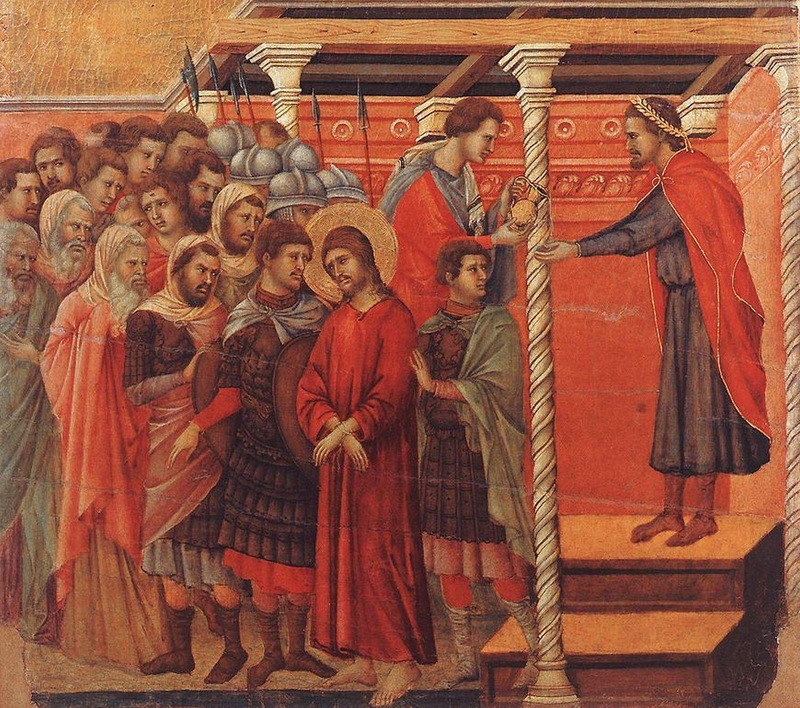
Only centuries later, in the 19th century, the Hungarian physician and scientist Ignaz Semmelweis worked out the true utility of washing hands. Before that, it was just good manners to keep your digits less grimy, especially if you were tucking into a meal.
Boiling Fruit and Vegetables
Eating raw fruit and vegetables was a no-no during the Middle Ages. These folks believed that raw fruit or vegetables were the cause of disease, so they gave them a good douse of piping hot water. It’s hard not to see where the medieval folk were coming from as they often lived in squalor, so they probably believed anything raw was unclean.
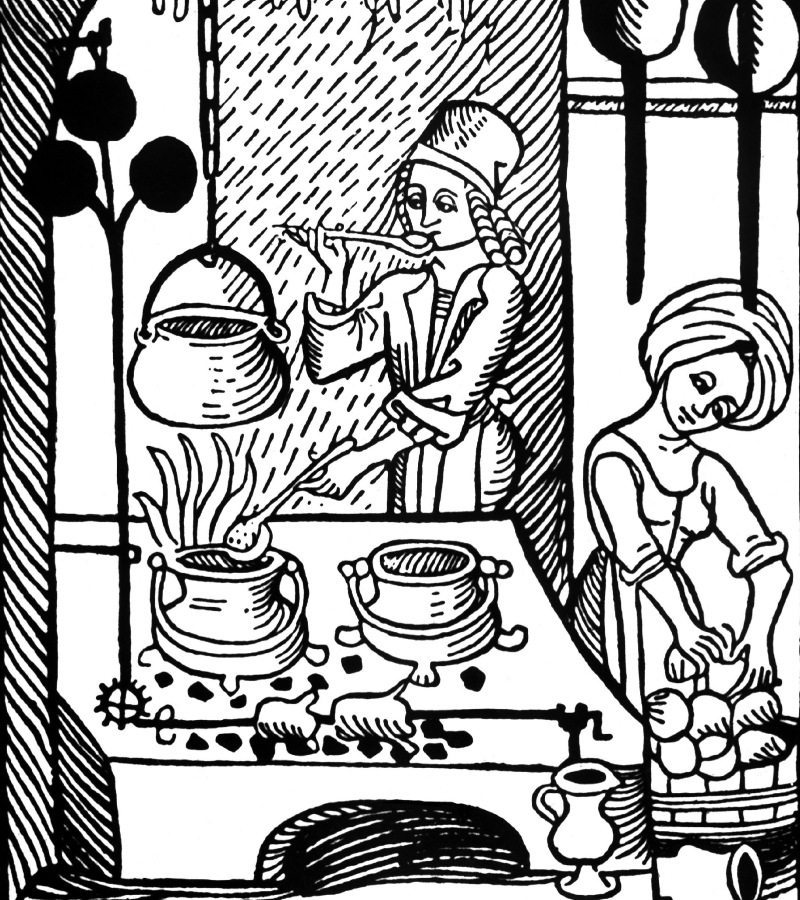
“The Boke of Kervynge” (The Book of Carving), written in 1508, explains medieval thinking stating, “Beware of green salads and raw fruits, for they will make your master sick” (Bovey, 2015). Sadly, the medieval folk got it wrong, as boiling robs veggies and fruit of all their nutrients like Vitamin C. In fact, it has led some historians to think that this practice caused scurvy to be so prevalent.
A Change of Clothes
One of the modern luxuries most of us fail to appreciate is a daily – or hopefully, a daily – change of clothes. Back in the medieval period, people didn’t change their clothes very regularly. While modern people, for the most part, change their clothes daily, folk during the Middle Ages changed their clothes once a season. People only had a choice of four outfits, and each outfit was reserved for a season.

No wonder people made such a big deal about harvest and spring. It didn’t only mean more food but a change of clothes. Even royalty didn’t change their clothes that regularly. The King of Scotland, James VI, only changed clothes after some months had passed. He even slept in the same clothes.
Freckles Weren’t Fashionable
The medieval folk weren’t fans of freckles. They considered them to be unsightly blemishes. Some of the more superstitious folk may even have called them “witchspots” or “witchmarks”. Contempt for freckles wasn’t something specific to medieval folk because even the Romans saw people possessing freckles as being “polluted”. This was something the medieval folk inherited from former historical times.
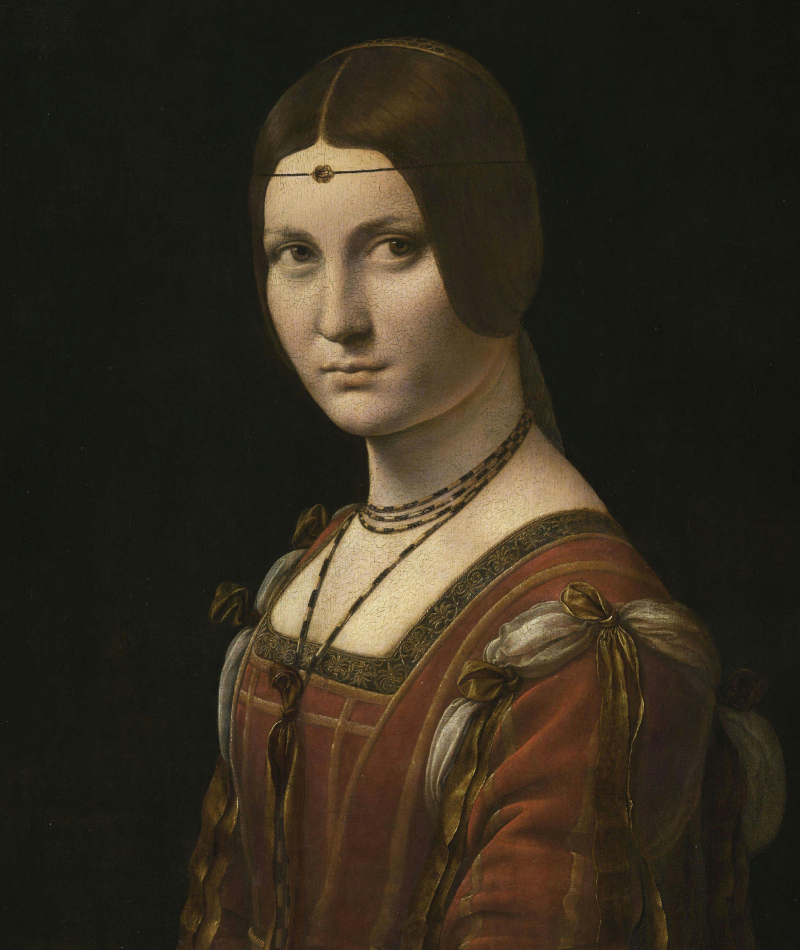
Since people back then weren’t all into them, they invented numerous strategies for removing them. One method included grinding up cuttlefish bones, root of bistort, and frankincense, then adding water and rose water and applying the mixture to one’s freckles. Other methods were even more extreme. Some medieval people used to rub sulfur daily on their skin to remove these skin spots.
Lead Powder Cosmetics
Everyone now may want the bronzed “summer” body, but in the Middle Ages, fair skin was all the rage. In fact, medieval people’s obsession with pale skin led to “fair” being used as a synonym for “beautiful”. If you had fair skin, it meant you probably weren’t spending the entire day doing hard labor in the fields, and, thus, weren’t a peasant.
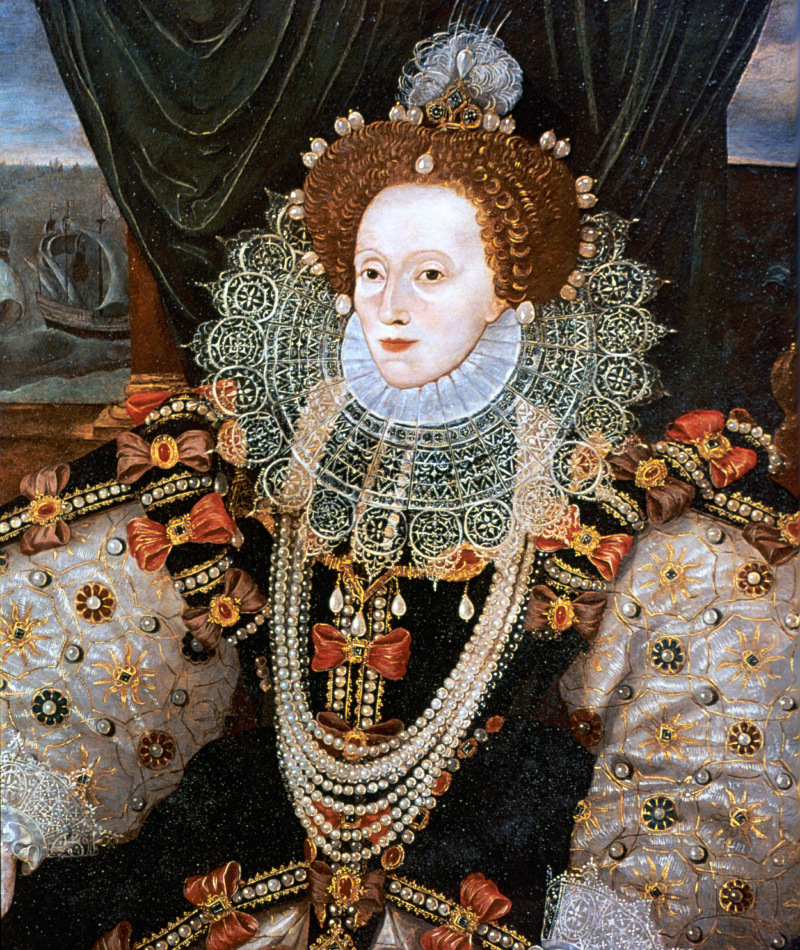
However, medieval folk didn’t want pale skin; they wanted the creamy milk-white appearance – and they went to “pretty” extreme lengths to get it. In Elizabethan times, a popular ingredient for face foundation was ceruse lead powder. Short-term it gave people the desirable creamy white skin, but lead is extremely poisonous. Long-term people weren’t only damaging their skin but harming their bodies.
Eagle Dung for Epidural
Even with epidurals and cesareans being available to pregnant women, giving birth is still not an easy matter. And it is still something that frightens many expecting mothers. That said, we’d take going into labor in the modern age any day over giving birth in the Middle Ages. When a woman went into labor, she drank a mixture of vinegar and oil, while eagle dung was a homemade poultice that was used for her labor pains.
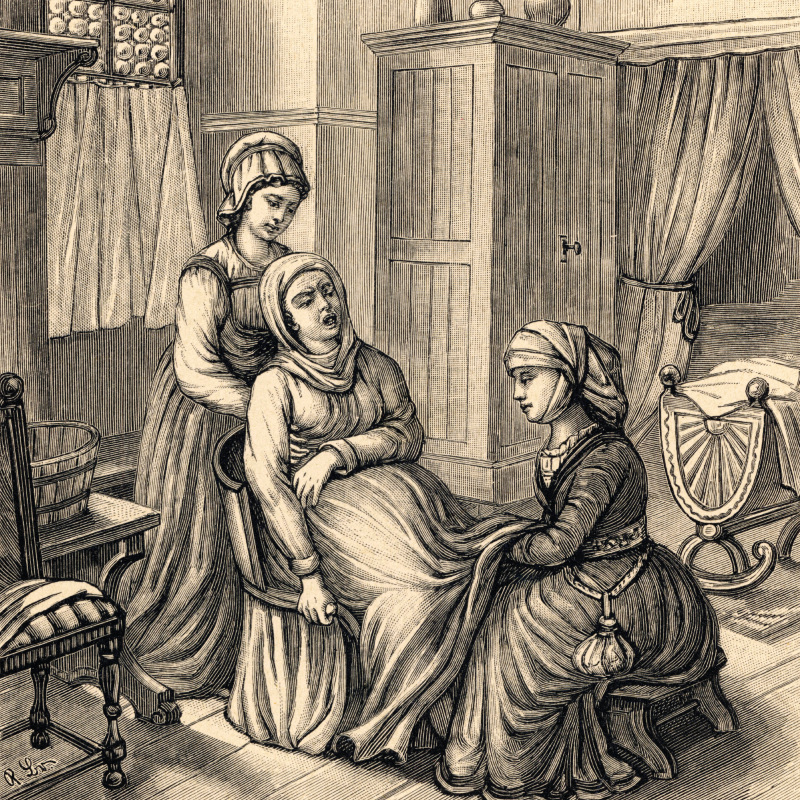
As smelly as it sounds, eagle dung was a medieval epidural. We’re not sure how effective it is for labor pains, but we’re guessing that most expecting mothers would give eagle dung a skip nowadays.
Tooth Worms
The Middle Ages weren’t for the faint-hearted. Now, there’s no actual thing such as a tooth worm – we really hope so anyway – but during the medieval period, people believed in such. In fact, the tooth-worm myth was something these folk inherited from their ancient ancestors. They really believed that the cause of toothaches was because tooth worms lived inside human teeth. And they had just the cure.
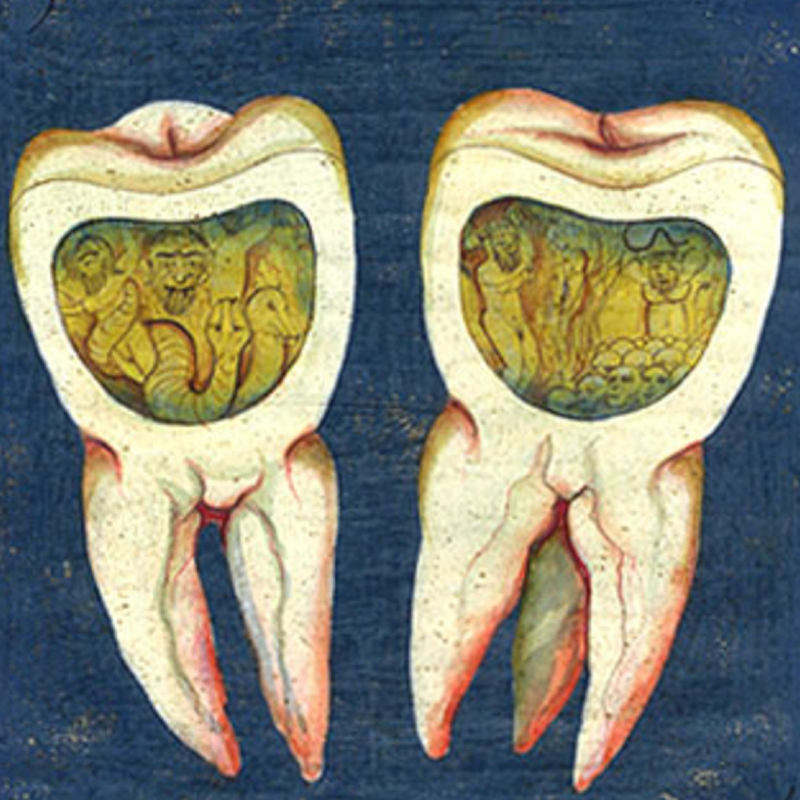
Back then, people used to light a candle or a basic cigarette to smoke out the worm. Then, they’d hang their heads over a bowl of water where the worm would fall in. We’re betting that this wasn’t an effective remedy for toothache. It’s certainly a blessing to know that what really causes toothaches are cavities and periodontitis and not tooth worms.
Combs
Even medieval people combed their hair. Although we imagine it was much harder than combing one’s hair in the modern period. Interestingly, even ancient peoples combed their hair like the Egyptians and Scythians. Like their ancient ancestors, medieval folk didn’t have as great a range to groom themselves with, but they still wanted to look good.
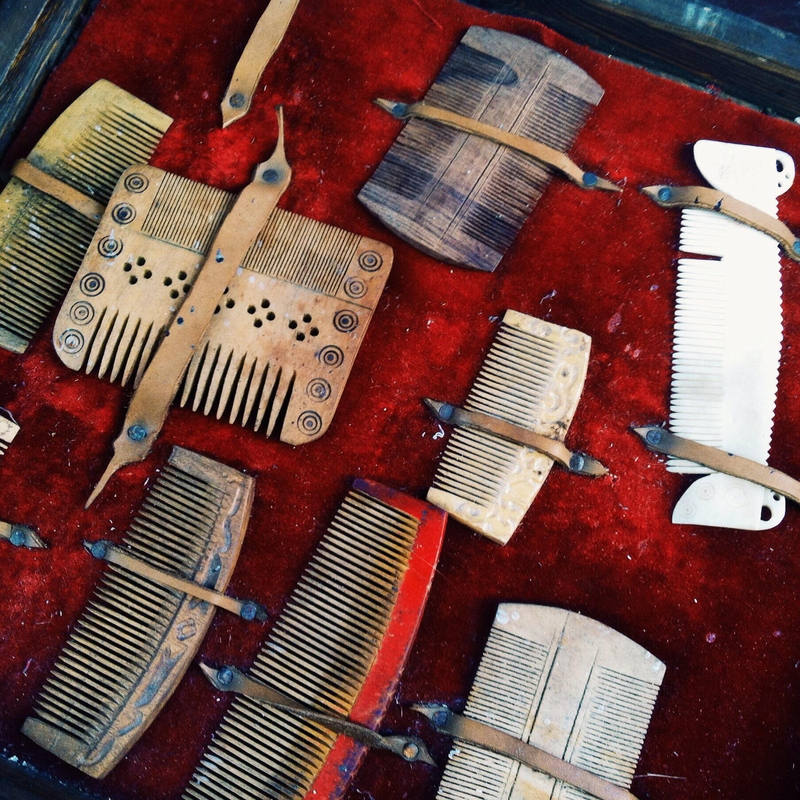
Essential to grooming oneself was combing one’s tresses. Combs were used back then, but they didn’t use plastic or metal combs. Generally, people carved combs from horns, bone, or wood. The more uppity folks had lavish types that were made from ivory. Even though having an ivory comb beats having a plastic one, the plastic one does the trick.
Cures for the Plague
Naturally, medieval people were petrified of the Plague in the 14th century. The death toll was incredibly high, and they weren’t taking any chances. During this time, plenty of remedies for the plague were invented — only by today’s standards, they weren’t exactly effective. Some remedies were downright disgusting. Others were simply strange.
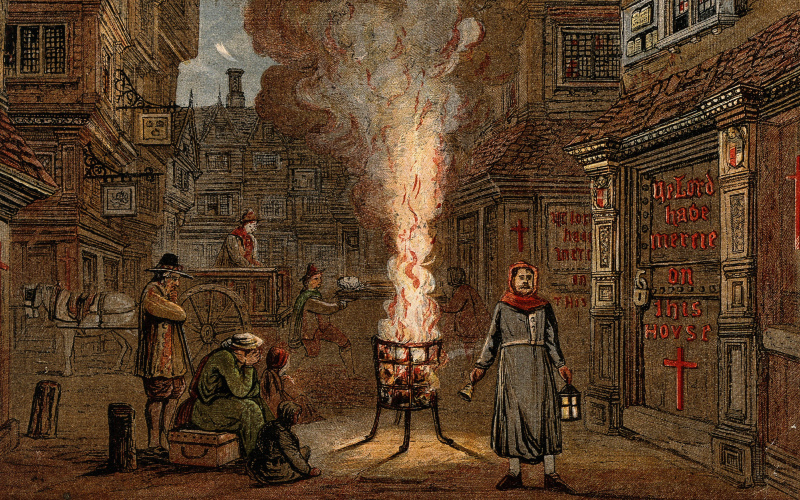
While there probably wasn’t an abundance of emeralds around, one remedy was to grind one up and drink it in a glass of wine. Another was to burn sweet-smelling herbs. The logic is easy to see. Sickness brings bad odors, so medieval folk thought that by burning sweet-smelling herbs, they’d get rid of the terrible smell and disease. While it mightn’t have fought the disease, at least the aromas were more pleasant.
Hot Pokers
All of us have at one time in our lives seen a scene in a movie where a flaming hot poker is used to burn away an infection. This practice is known as cauterizing a wound — and it was something they did during the Middle Ages. In fact, this treatment wasn’t only a medieval practice but an ancient one too.
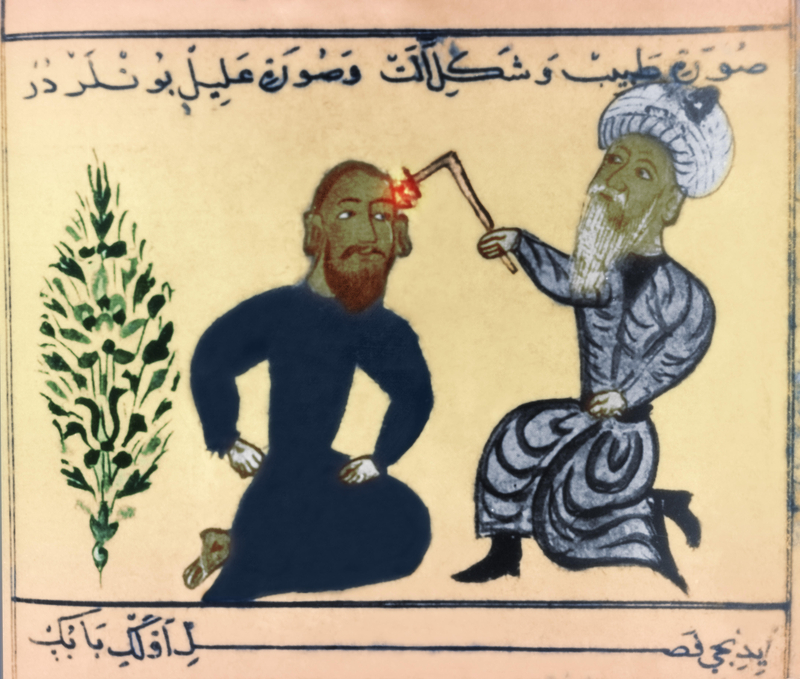
Back then, people used to place a sheet of metal into a fire, and when it became red, it was hot enough to use. They then placed the red-hot poker over infected wounds to seal the wound. This wasn’t only used for infected wounds, but people also burned away their warts. Things have definitely looked up since the invention of penicillin.
Anti-Age Remedies
It turns out that it's not only modern people who are trying to turn the clock backward but also our medieval ancestors. They were just as worried about getting wrinkles and, in their own ways, tried to prevent them. Where we have anti-age creams, serums, and sun lotion, medieval folk had stinking iris.
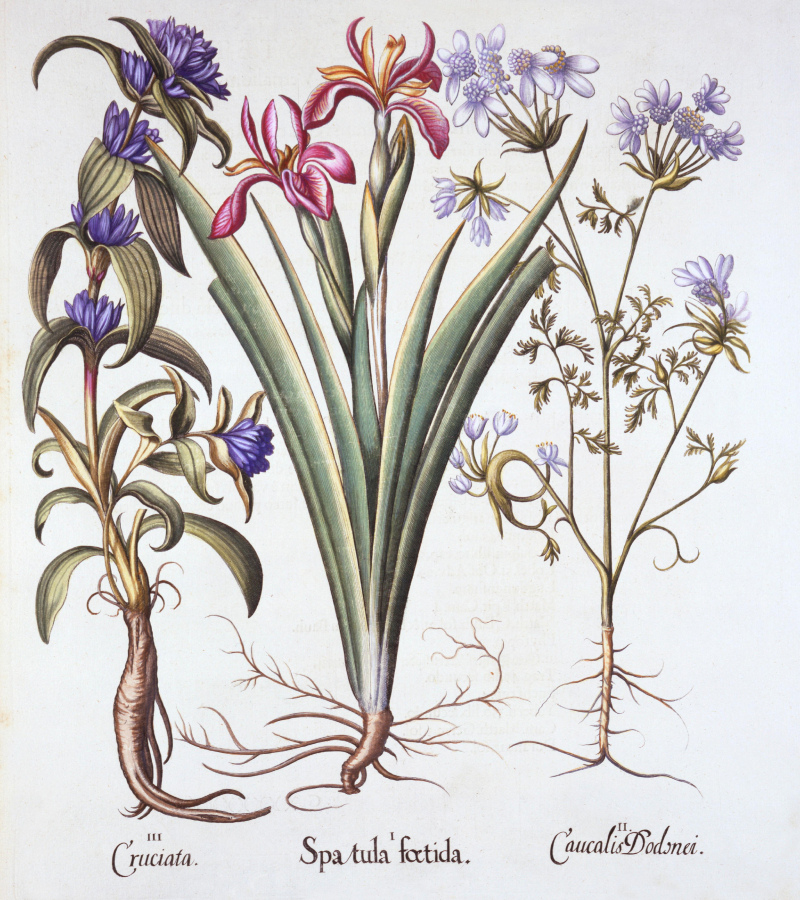
The extract of stinking iris was used as an anti-aging serum. Women would apply the juice to their faces before sleeping. In the morning, they’d pull off the extract and rinse their faces, and be greeted by a much more youthful visage. Apparently, something in the juice of stinking iris would raise the skin and remove some of the wrinkles.
Knives
If we came across someone who carried a knife on them, we’d be quite wary of them. In fact, we’d probably not want to come across them in a dark alley. But, back in the Middle Ages, we’d think nothing of it. We’d probably even be carrying knives on us too. Generally, people carried the shorter types with them as they could be used during hunting, leather-crafting, fishing, and upholstery work, making knives an especially useful tool.
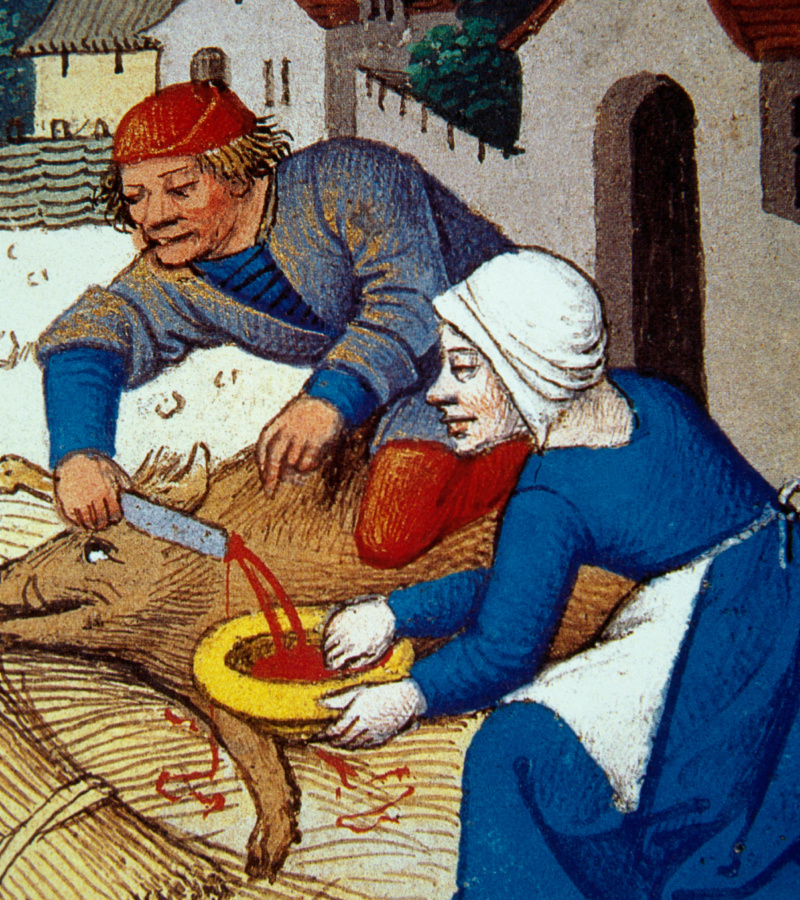
Of course, these weren’t the same knives people carved meat or prepared meals with. Medieval folk used their own discretion and generally had longer knives to carve meat with. So, you wouldn’t have to worry about eating off of a knife that was used to craft leather.
Wigs & Animal Fat
Medieval folk were known for their oversized and extravagant wigs. We’ve also seen portraits of medieval folk wearing elaborate wigs. Designing such glamorous and elaborate wigs itself was no easy feat. Fortunately, wigmakers had a bit of help. To help them shape the wigs into these glamorous designs, wig makers used animal fat.
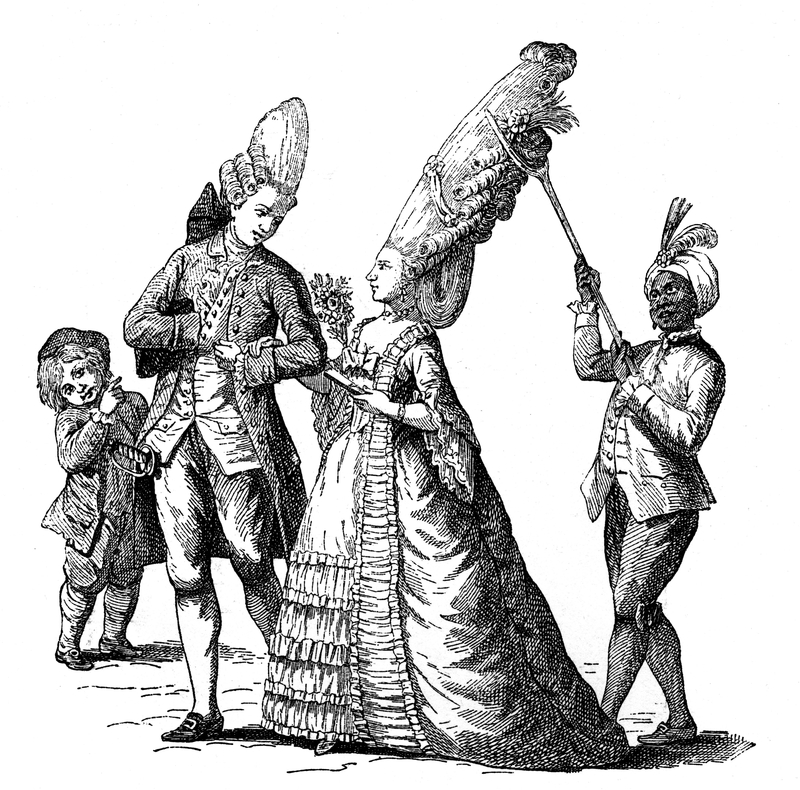
Though these noblemen and noblewomen would be rocking an awesome hairdo, their hair wouldn’t smell that pleasant. After all, you can’t really expect a wig shaped by animal fat to smell wonderful months later. A bad-smelling wig was the least of their problems. These wigs were also highly flammable, meaning one had to stay clear of open flames while rocking an elaborate wig.
Uncomfortable Shoes
Most of us take for granted the importance of shoes. For the most part, shoes are for keeping our feet warm and clean and making fashion statements. For medieval folk, shoes, too, helped them to keep their feet warm and clean, but they also helped them to stop parasitic worms from entering their feet – especially in marshy lands. That said, the shoes weren’t exactly comfy.
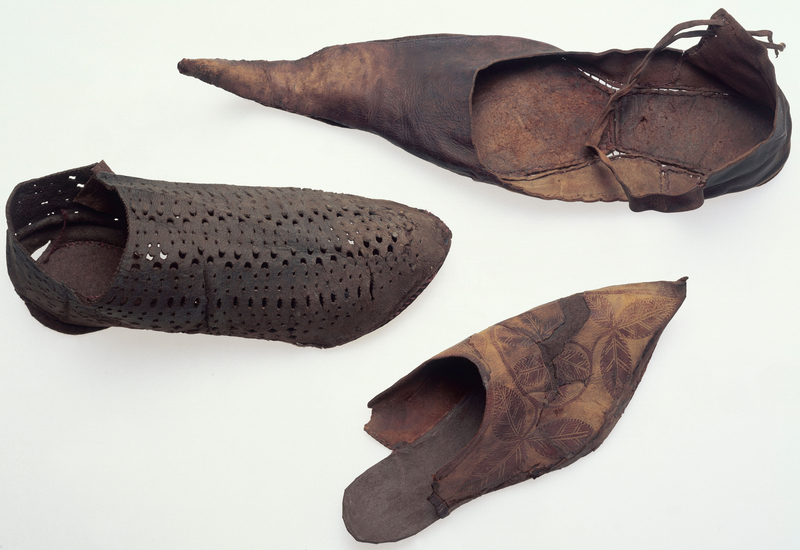
Shoes were made of cloth, leather, or wood (known as clogs). We’re guessing the clogs weren’t exactly made for long-distance running. Of course, some medieval people were trying to make a fashion statement. It was quite commonplace for men to wear shoes with thin long, pointed tips. Except, these weren’t only uncomfortable, but many men developed bunions from wearing them.
Nosebags
Considering that people used to empty chamber pots onto walkways, it’s unsurprising that town centers had a particularly nasty stench. And, of course, not everyone could stomach the smell. If you belonged to a more fortunate social class, then, perhaps, you’d own a nosebag. While nosebags were generally used for horses in the modern period, back then, a nosebag was a canvas or leather bag that was filled with pleasant-smelling herbs and flowers.
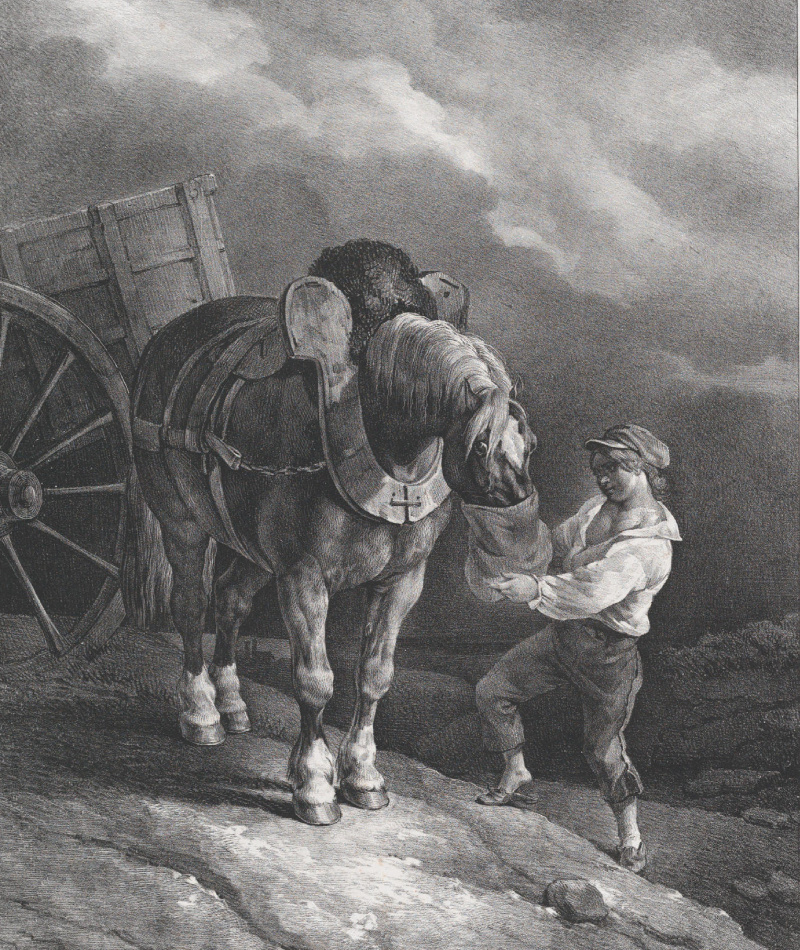
Whenever you got to a particularly foul-smelling alley, you could just pop your head into your nosebag. It’s certainly a sign of the times that the only place you’re likely to find a nosebag in modern times is in a stable, around a horse’s snout.
The French Royalty Didn’t Cut Their Hair
Though wigs were all the rage back in the Middle Ages, this doesn’t mean that no one cared about natural hair. One group of people who cared a lot about their hair was the French royalty. In fact, in a life-or-death situation, the French valued their hair over their lives.
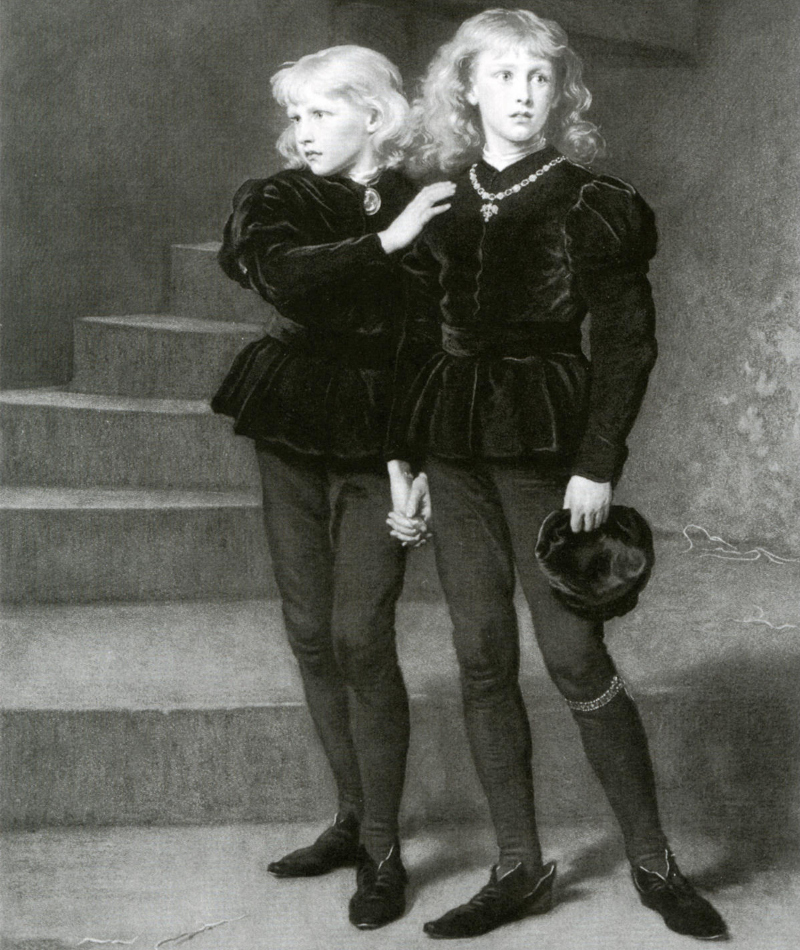
In 6th century Paris, two princes were kidnapped. The terms of their ransom were either for the queen consort to agree to cut their hair or to let them die with their tresses untouched. The queen chose the latter. One of the princes wasn’t having this. He escaped, cut his locks, and became a monk. This prince clearly valued his life over his hair but not everyone was ready to make the same deal.
Black Plague Quarantines
We may have heard of the Black Plague, but few of us know how it broke out in Europe. During the 14th century, Genoa was a powerful trading city, and it had a port in Caffa (now Feodosia) in Crimea. After an unsuccessful siege of Caffa, the Mongolian leader Janibeg ordered infected corpses carrying the plague to be catapulted into the city.

The disease soon spread among the Genovese traders, and they hurried back to Genoa. The only problem was that now they were carrying the disease – and they spread it to each port on their return journey. Naturally, medieval people soon became suspicious of travelers. When merchants returned from sea voyages, they needed to go into isolation for 30 days. This was later raised to 40 days of isolation.
Urine for Bleach
It’s hard to believe that urine has so many uses – uses in the Middle Ages, that is. While no one’s collecting their urine after visiting the WC, back then, urine wasn’t only used as medieval laundry detergent, but it was also used for medieval bleach. It seems like getting rid of stains was just as important to medieval folk as it is to contemporary people.
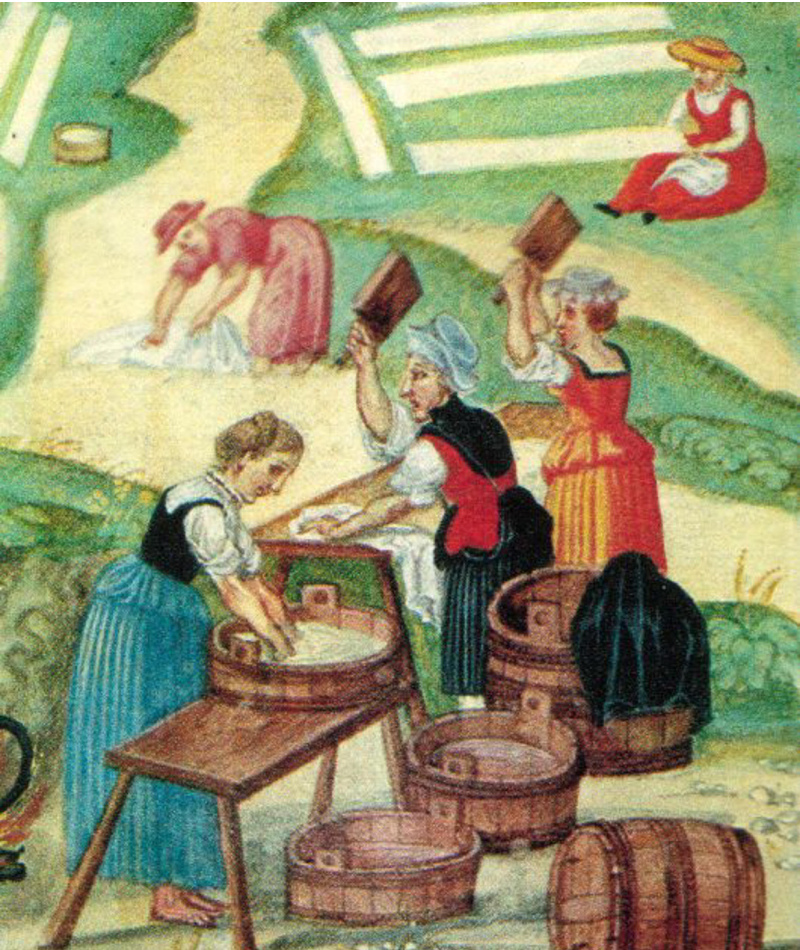
Just back then, you had limited options for getting rid of stains. One option was to use urine. Interestingly, urine was used to get rid of stains. It also helped to make faded garments or materials look white again. In the minds of medieval folk, urine was some pretty magical stuff. Nowadays, we prefer bleach or stain removers.
Why Monks Shaved Their Heads
Though lice were rife in the Middle Ages, few people shaved their hair. While having a head full of lice must have gotten on people’s nerves constantly, they never thought to shave their heads to stop the spread of these pests. In fact, medieval men did so for another reason completely – for humility. Having beautiful locks was a sign of power. That’s why members of royalty never shaved their heads.
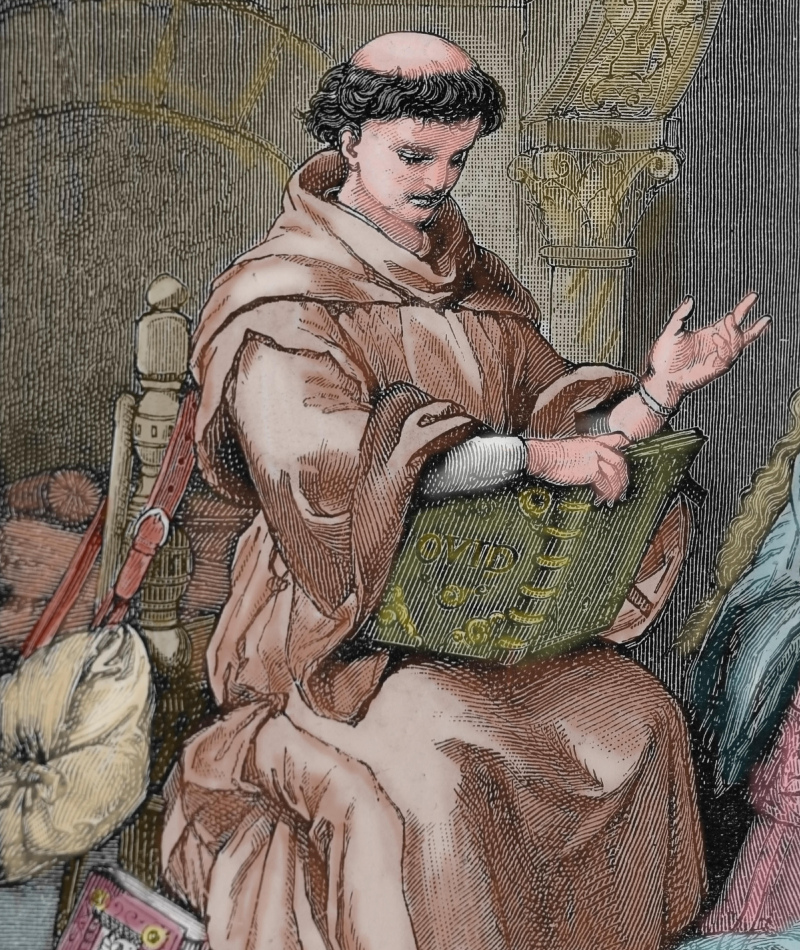
The longer your locks, the more powerful you were considered. However, as monks weren’t interested in power – or not supposed to be anyway – they shaved their hair to show their humility. They generally shaved most of their heads but left a small narrow piece of hair. Or they shaved the middle and left the remaining hair alone.
Ear Cleaning
Talking about cleaning our ears is not pleasant. And it’s even less pleasant actually cleaning our ears, but it's got to be done. Even our Medieval ancestors knew all about ear cleaning. While we use cotton swabs to remove ear wax from our ears or go to a doctor to have our ear canals rinsed, medieval folks used “ear scoops” or “ear picks.”
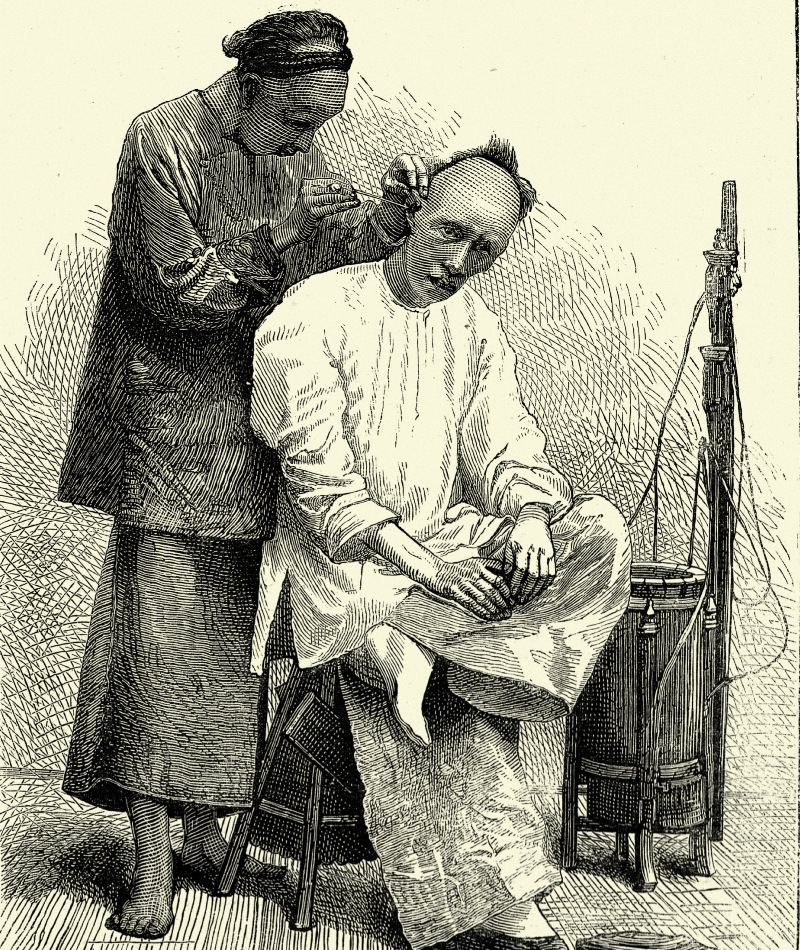
Archaeological evidence shows us that “ear scoops” or “ear picks” were generally long wooden or metal tools used for removing wax. In fact, ear cleaning was so important among Vikings that they used to carry their “ear picks” on a chain around their necks, and of course, when they had a moment, they could do a bit of ear cleaning.
People Were Quite Drunk – But They Had No Choice
Back in the Middle Ages, people were often just a bit tipsy. This is not because our medieval ancestors were always partying it up but because they had no choice. Water was too unsafe to drink. Thanks to developments in the Age of Enlightenment, people got a bit more clever about water sanitation, but back in the Middle Ages, water became associated with disease. And they were right.
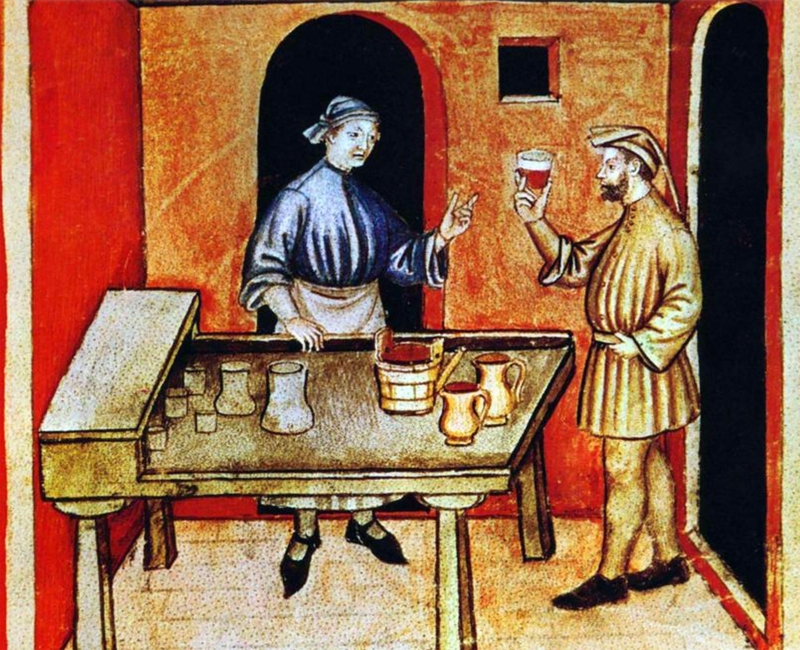
Water was often contaminated as people were often dumping waste into rivers and streams. Instead, people then had little choice but to drink ale, beer, and wine with their meals. Of course, people tended to be a little tipsy, but as alcohol distillation wasn’t as advanced as it’s nowadays, beer and wine didn’t contain such high percentages of alcohol.
Don’t Eat the Plate
Thanks to advances in ceramics, people tend not to eat their plates. In the Middle Ages, ceramics weren’t abundantly available. Some people had porcelain and china, but those were costly. People served meals on trenchers, which were round flat pieces of bread, perfect for serving food on. It is debated whether the trencher was an old slice of bread or whether it was just a really round piece of really hard bread.

Once you were finished eating the meal, the trencher would be dipped in sauce and eaten. For some hosts, it was seen as bad manners to eat the trencher because sometimes, if they were really poor, you’d be eating them out of house and home – literally. In other cases, the trencher would be given to the poor.
Saturdays for Hair-Washing
For us, washing our hair is pretty straightforward. All we have to do is get into the shower, squeeze some shampoo onto our tresses, lather, and rinse. But washing one’s hair back in the Middle Ages was no straightforward thing. In fact, it was such a difficult task that commoners waited for Saturdays to wash their hair.
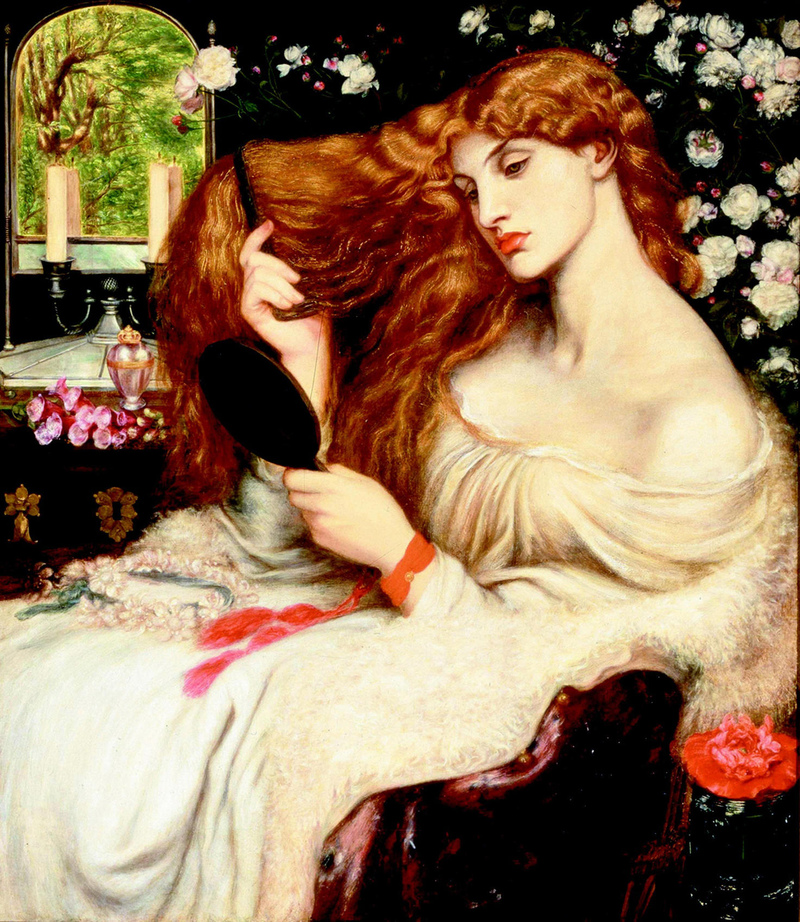
The first reason they left it for Saturday was because the process of washing hair needed two people – someone was needed to rub the oils and sweet-smelling herbs into their hair. The second reason it only took place on Saturdays was because Sunday meant Church – and, of course, that meant getting dressed in their Sunday finest.
Mouse Skins for Eyebrows
Even in the modern age, we spend a lot of time making sure our eyebrows look their best. We pluck at them, wax them, or fill them in with color. It’s not at all surprising that our medieval ancestors took an interest in having shapely eyebrows. It’s just not all that becoming to have unflattering eyebrows. But our medieval ancestors took it to a whole other level – and a rather unhygienic one at that.
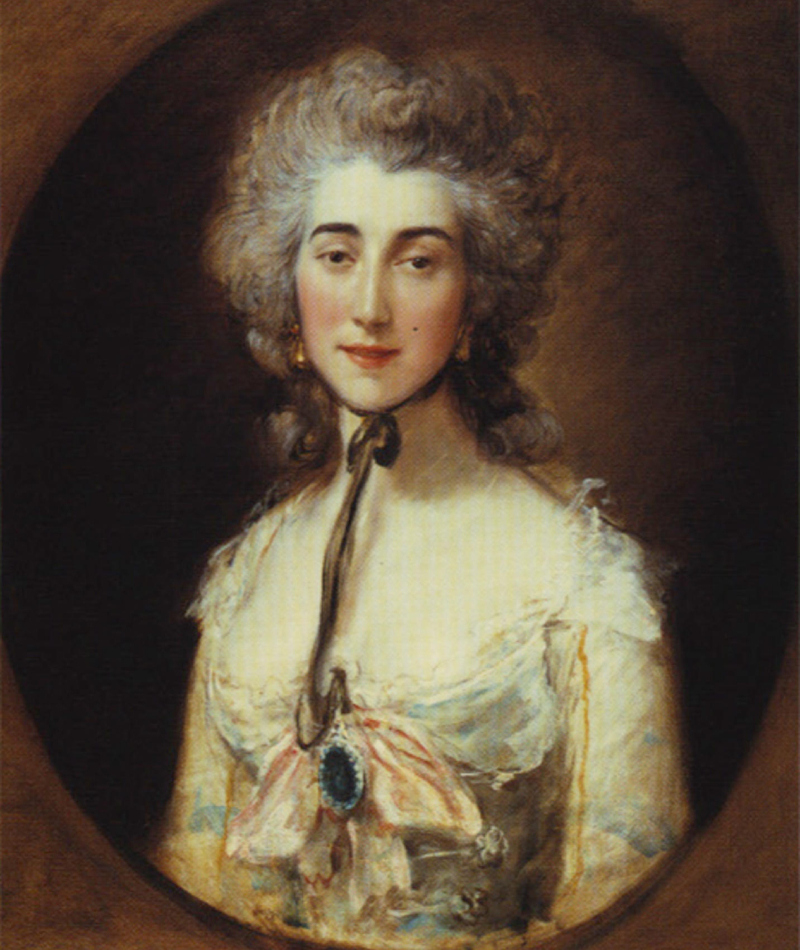
If a person’s eyebrows were thinning, it wasn’t uncommon for them to use mouse skins to fill in the patches. Of course, if a person lost all their eyebrows, they would be replaced with mouse skins. By today’s beauty standards, we’d happily use a pencil or go for eyebrow implants.
Perfume
Honestly, the Middle Ages sounded stinky. And they were. There was an abundance of foul smells lurking around. People were smelly. Streets were smelly. And so were moats. Fortunately, one group of people were not. Naturally, they were the most privileged – the upper class. While the Crusades are considered a stain on human history, one of the interesting consequences of these conflicts was the introduction of perfume.
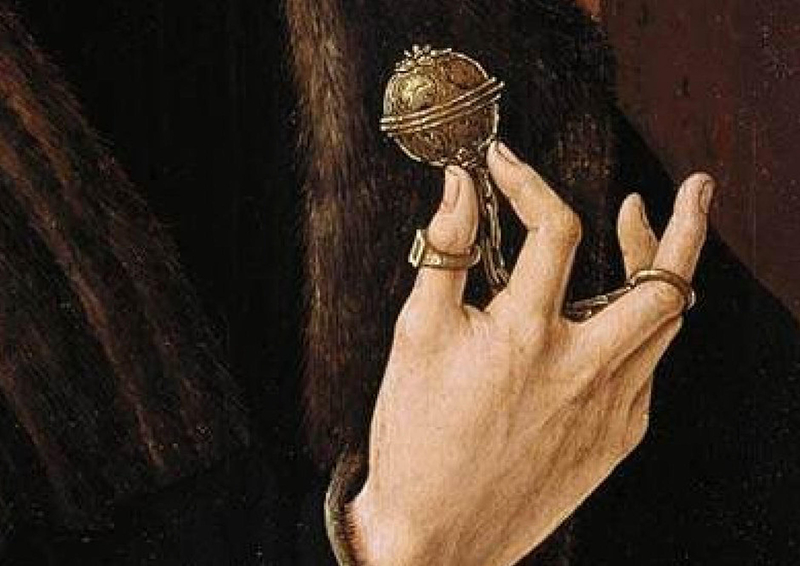
The Crusades put the Europeans in greater contact with perfume traders, and so, many of them brought back perfume. Even musk was really expensive back then, but aristocratic women and men could afford lavender and rose aromatic oils, which they began using as perfumes during the Middle Ages.
Mercury for STDs
If there’s one thing people know about the Middle Ages, it’s that syphilis was a problem. That said, it wasn’t the only sexually transmitted disease (STD) back then, but it was one of the most problematic. While we’ve come a long way in learning and dealing with STDs, we can be thankful we didn’t live in the Middle Ages.

One of the “supposed” cures for syphilis during this age was to treat it with mercury. This treatment was definitely akin to jumping from the fire into the fireplace. While syphilis was incurable, mercury is highly poisonous, so this wasn’t the most effective manner of treating patients with syphilis.
Natural Makeup
People have been wearing make-up for ages. In fact, it’s estimated that ancient Egyptians were the first to start this trend. And this habit of doing up our faces continued with people during the Middle Ages. Of course, by the time it reached the medieval folk, the habit had changed a bit. Religious values had a bit more weight during the Medieval period, and because of this, vanity was seen as sinful.
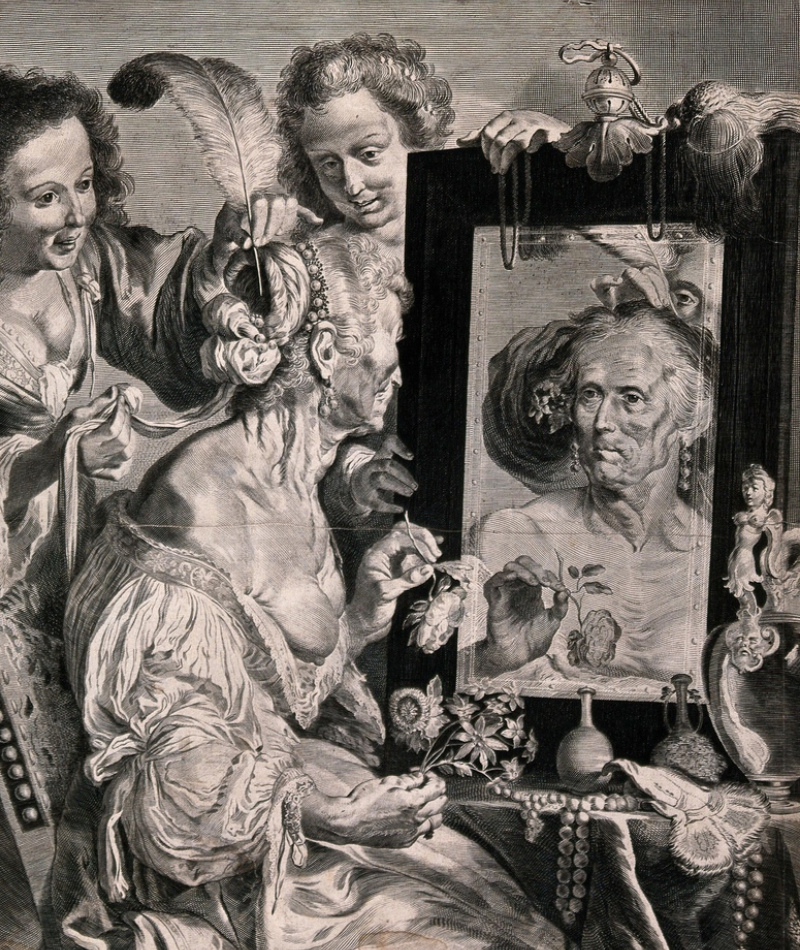
Hence, indulging in make-up was a big no-no. Women got around this by using more natural-looking make-up. Women wore foundation made from Lily root and used wine-pulp lip balm to give their lips a darker tint. Interestingly, women often resorted to makeup to hide illness so they would appear healthier.
Lip-Care
Some contemporary cosmetics have a much older history than you’d think. One such example is lip-care products. Nowadays, we can use all kinds of lip balms to stop our lips from being dry and cracking, but even in the Middle Ages, they too had lip-care products. Medieval women used to mix white bryony, red bryony, honey, and rose water. Then, they boiled it and applied it to their lips.
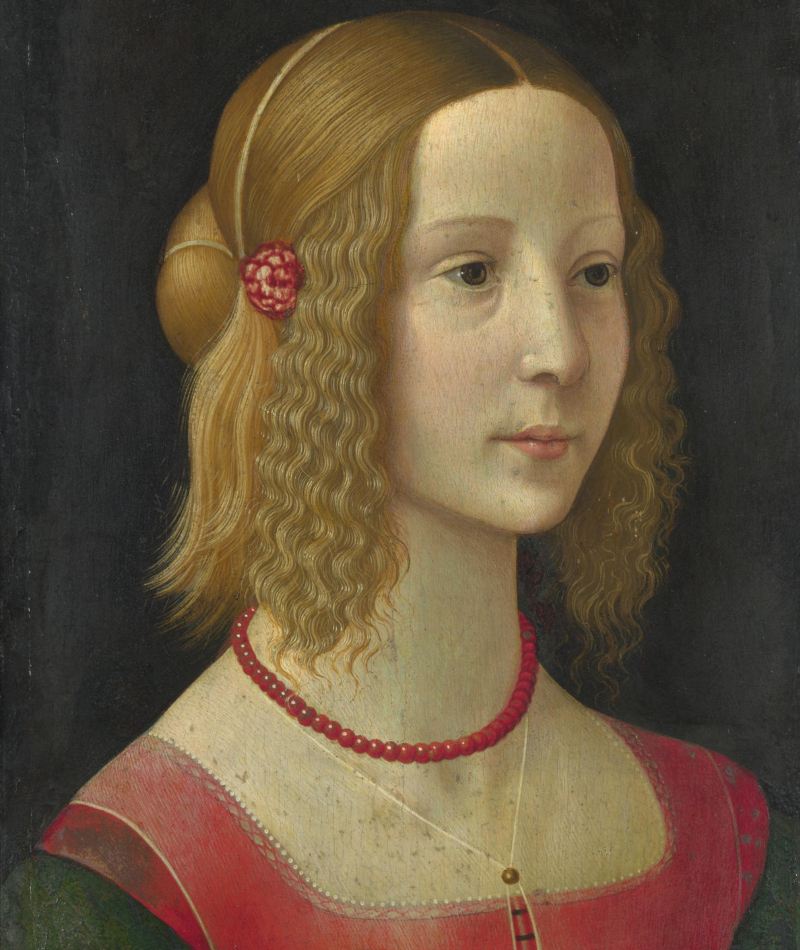
Apparently, the concoction was used to keep their lips soft and remove any cracks or wounds. Of course, it’s not nearly as convenient as contemporary lip balms, but it's quite amazing to think that our medieval counterparts had their own ways of looking after dry lips.
Curly Hair
It seems like people always want something they can’t have. Women with curly hair go for costly keratin and Brazilian hair treatments to bring their curls under control, while women with straight hair go for expensive spiral perms so they can have lovely locks. Interestingly, this desire for curly hair isn’t a contemporary demand. Even medieval women wanted to curl their tresses.

Back then, women would grind up danewort or dane weed and mix it into oil. They used to apply the mixture to their hair and then tie it to the head with leaves. While it’s probably a much cheaper way of curling our hair, we’d probably skip the oily mixture and head to the salon for a spiral perm.
Feminine Hygiene
Even today women complain about their cycles, but we bet that most women would pay an arm and leg to live in the 21st century as opposed to the Middle Ages. Very few things during the Middle Ages were convenient, and the same goes for women’s cycles. While women have plenty of options nowadays, from sanitary pads to moon cups, medieval women generally used rags.
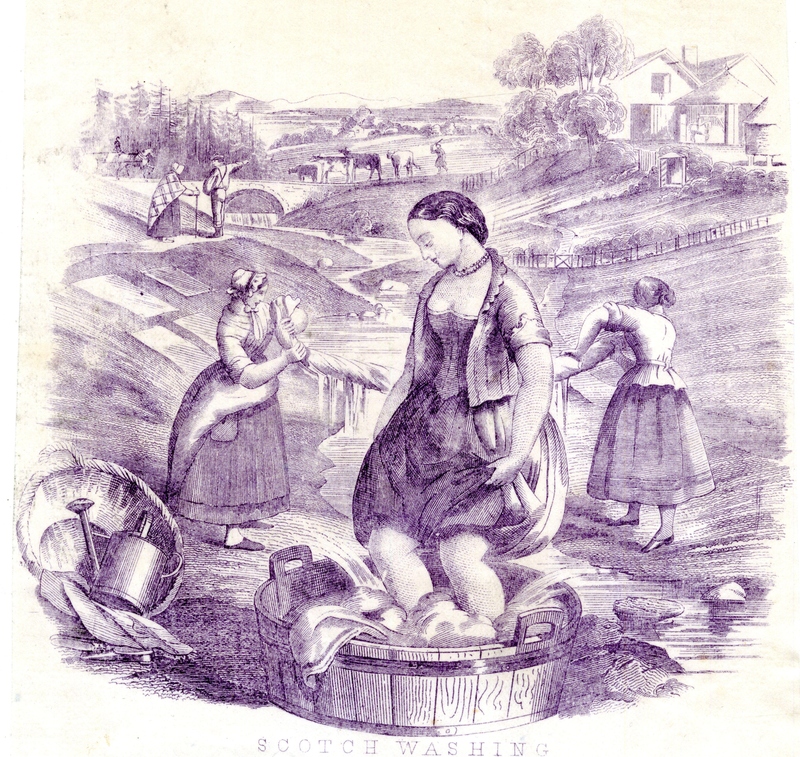
Women in higher rungs of society could throw their rags away, but the poorer women had to wash their rags and reuse them. While there is one week every month that most women don’t look forward to, we can safely say it beats having to use rags – and definitely beats having to wash those rags.
Hair and Beard Dying
Surprisingly, there are several things that are common nowadays but were actually available back in the Middle Ages. Of course, they were available – they just weren’t quite like the products we have nowadays. Instead of going to your local supermarket to buy hair dye or a salon to have your hair dyed, people in the Middle Ages came up with all kinds of concoctions to dye their hair. And believe it all not – men also dyed their beards.
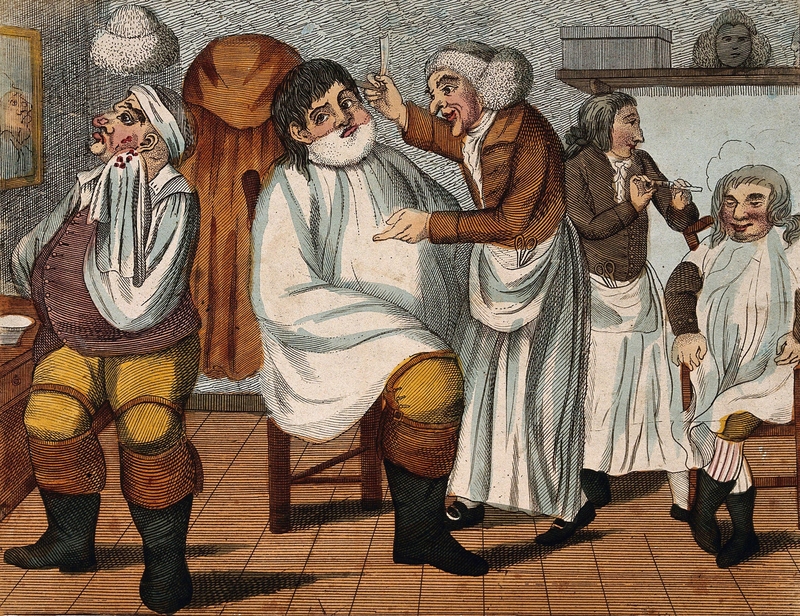
A mixture of Calendine roots, olive madder, oil of cumin seeds, or saffron shavings was used to dye hair blond, gall oak was used for black dye, and tree bark for brown hair. Interestingly, blonde dye was popular even back then. It just goes to show that blonds have always had more fun.
Body Hair Was a No-No
No matter the age, women have always faced pressure to fit in the beauty standards of society. The Middle Ages were no different – and probably involved a lot more pain. Body hair was seen as a big no-no, and women went to great lengths to measure up. Women used instruments like basic tweezers to remove hair. Excruciating as it sounds, women even used to remove hair from the nether regions. Of course, not all approaches were painful. Some were downright disgusting.
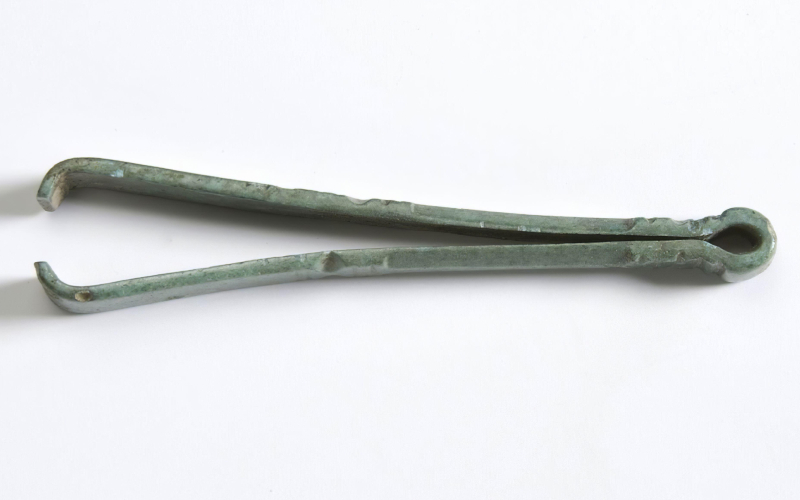
Old cat excrement was also used to scrub off unwanted hair. Naturally – or rather unnaturally – this kind of custom took place among the aristocratic women simply because they had access to such “products”. This is probably the only time where being a commoner had more advantages.
Big Foreheads
Looking back on the Medieval Period, it’s clear that beauty standards change with the times. One thing that was considered a hallmark of beauty back in the Middle Ages was having a high forehead. While having a big forehead is not necessarily something desirable nowadays, women went to great lengths to make sure they had a nice high forehead.
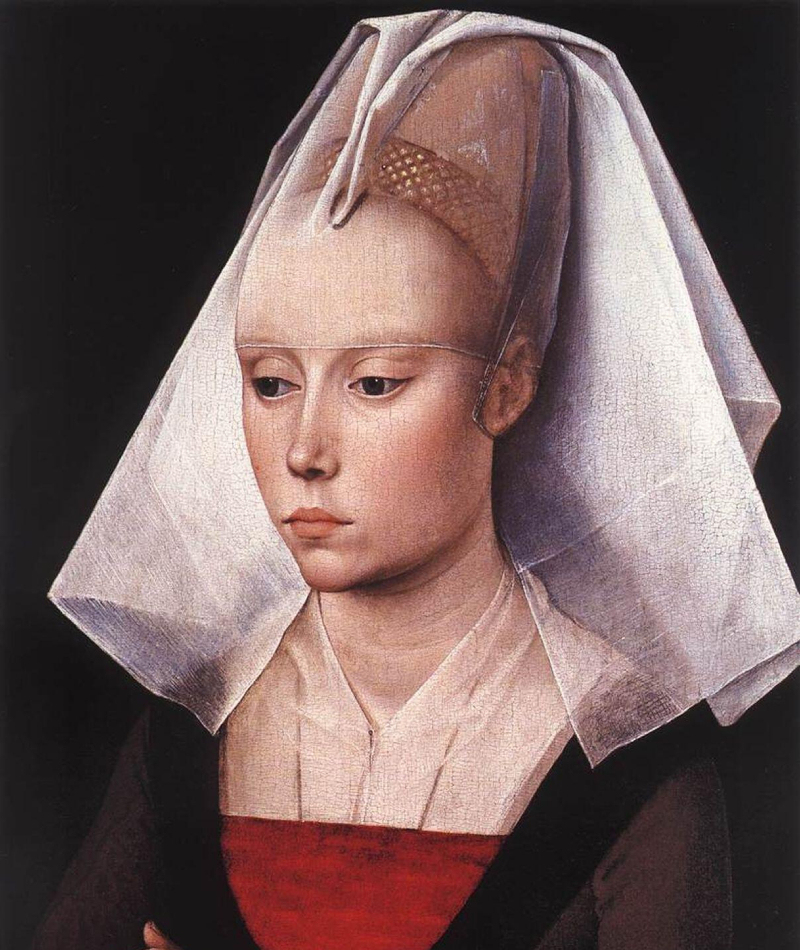
Medieval women generally used to pluck their hairlines back so they could get the desired effect. While many contemporary people are trying to prevent their hairlines from receding, in the Middle Ages, strange as it seems, people were doing the exact opposite. It just goes to show – beauty is certainly in the eye of the beholder.
Fire as a Medieval Disinfectant
Nowadays, it’s common to call in pest control when you have a problem with roaches, ants, or any typical household pest. Back in the Middle Ages, household pests were a big problem. Lice and fleas were found in the straw used to make beds and flooring. People lived very close to pests. That said, people came up with ways to disinfect their homes. That’s right – they used fire.

While it seems strange to think of fire as a disinfectant, people used to burn their homes to purify them. This was especially common during times of disease and outbreaks. Of course, it was very dangerous as outbreaks were very common during this period – a.k.a. the Great Fire of London.
Facial Routine
Nowadays, most people have morning and evening facial cleansing routines. It’s nothing out of the ordinary to cleanse one’s face, apply toner, and finally, apply some kind of moisturizer. Interestingly, this kind of daily facial care also took place in the Middle Ages. The beauty standards then for women were to have milk-white and soft skin.

At the end of the day, everyone generally washed their faces, but sometimes, women applied animal fats to their faces during their evening facial routines. Applying animal fats is one way of keeping one’s skin soft and smooth. As some people believed in the power of gemstones, other less effective ways of cleansing one’s face included licking gemstones or rubbing gemstones over their skin.
Medieval Toothpaste
When we think of medieval people, we generally think of people with a mouth of rotten or missing teeth. Though hygiene back then was not as advanced as it is nowadays, archaeological evidence shows that medieval people’s teeth were in better condition than is commonly thought. Sugar only became widely available in the 20th century and has contributed to a lot of tooth decay.
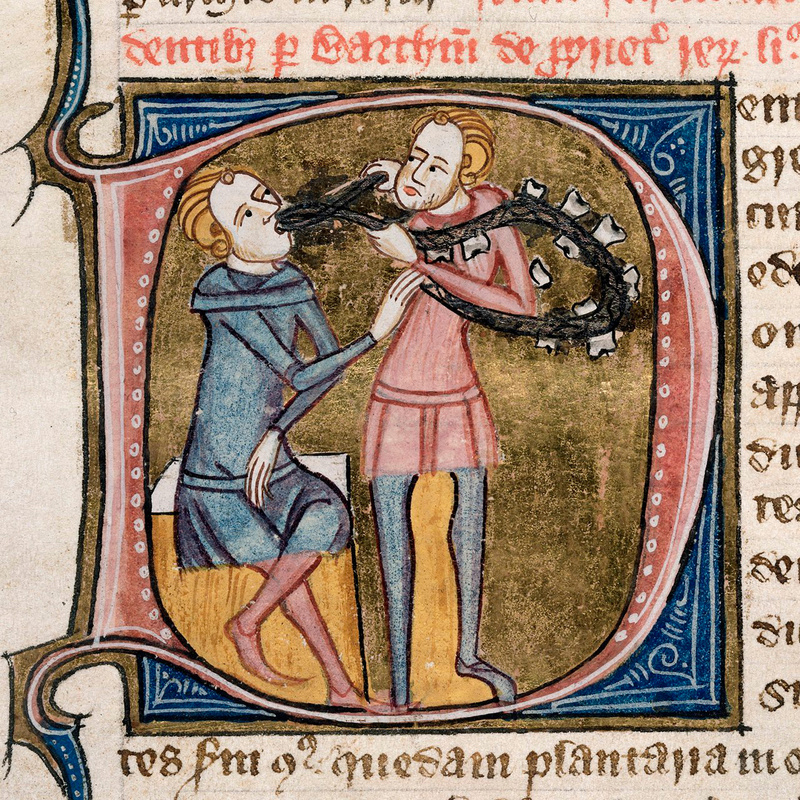
While medieval people did have tooth decay, they also had rudimentary toothpaste – and even tooth powders – to help keep their pearly whites squeaky clean. Medieval toothpaste was made from sage and ground salt or ground mint, pepper, and rock salts. While activated charcoal is trending nowadays, surprisingly, medieval people used charcoal too. They used charcoal powder from rosemary stems to clean their teeth.
Mouthwash Too?
It turns out people have been using minty mouthwashes for centuries. Going back right to the Middle Ages, people have been keeping their breath fresh with minty mixtures. And while it’s hard to believe, medieval people had quite a range of mouthwashes. In fact, they probably had more choices than we have in the modern age. As unpleasant as it sounds, people also gargled wine and vinegar to keep their breath nice and fresh.
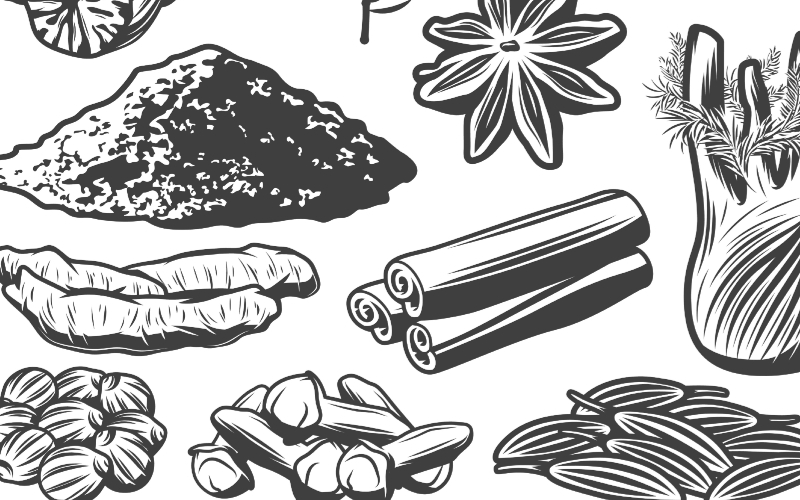
Other ways of getting rid of bad breath was to chew on mint, fennel seeds, parsley, cloves, and cinnamon. While we doubt that wine-flavored mouthwash will take off, it sounds like there might just be markets for clove-flavored and cinnamon-flavored mouthwashes. Maybe, we can learn something from the not-so-stinky Middle Ages after all.
Not Just Medieval Times
Can you imagine living in the unsanitary conditions of the dark medieval era, considering the personal hygiene standards we have just covered? We thought not. Now, let's shift to the changes in personal hygiene as we fast forward to the days of the Wild West.
While the Wild West may have romanticized the rugged and adventurous spirit of the frontier, it often overlooked the harsh realities of personal hygiene. Inadequate access to clean water, limited bathing facilities, and sparse availability of toiletries led to unhygienic conditions.
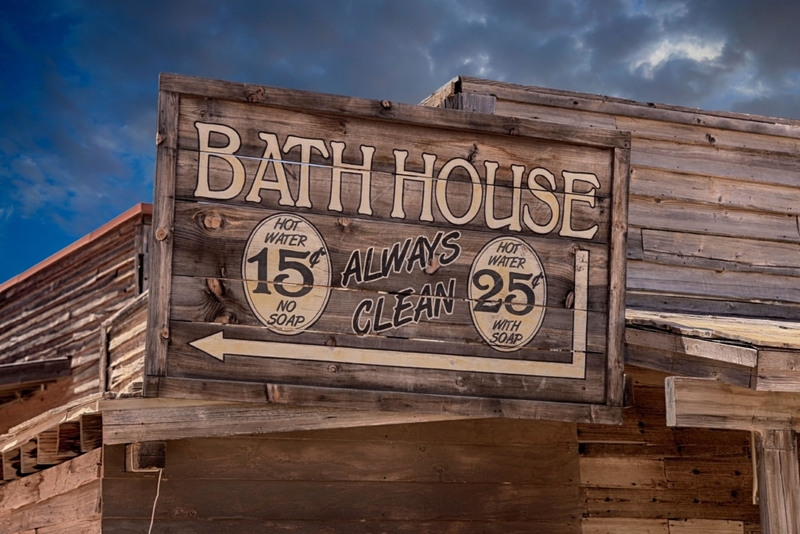
Disease outbreaks, such as cholera and typhoid, were common occurrences. So, before immersing yourself in the allure of the Old West, remember that behind the Hollywood glamour, life was marked by challenging sanitary conditions and the constant threat of illness.
The Saloon Spittoon
In the Old West, saloons were bustling hubs where people gathered to indulge in drinking, gambling, and sometimes even brawling, all in the name of socializing. Chewing tobacco was a common habit among many cowboys, resulting in copious amounts of spitting. While some impressive individuals could accurately aim for the spittoon from a considerable distance, many missed their mark.
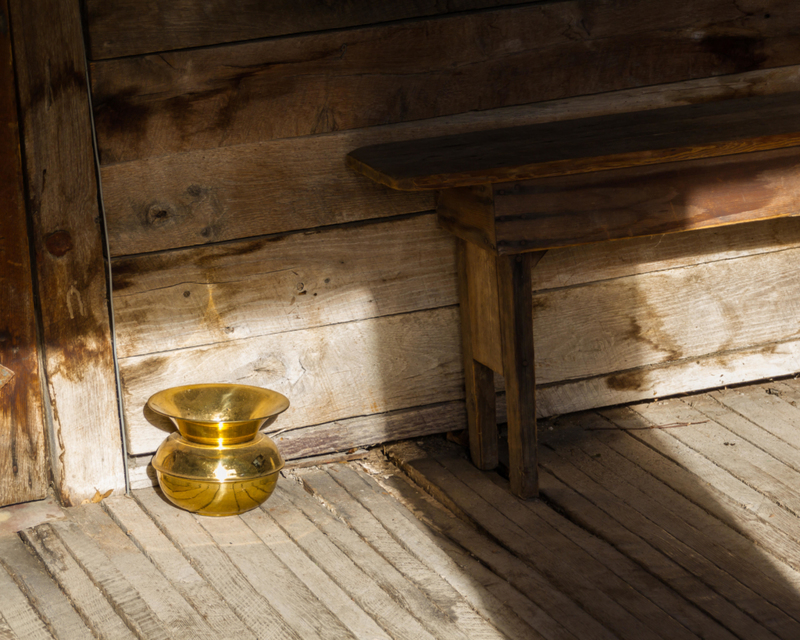
In fact, some didn't bother using the spittoon at all, choosing instead to spit directly on the sawdust-covered floors. Consequently, these floors became breeding grounds for a multitude of germs. The situation became so unsanitary that certain establishments banned spitting, imposing fines or even jail time as a punishment.
Public Beds Were Available
However, using these beds came with personal risks. Similar to their medieval predecessors, beds in the Old West were often constructed from straw and accumulated filth. Lice, known as "seam squirrels," was a persistent problem, infesting public beds that were seldom cleaned or changed. Bed bugs were another prevalent issue, thriving in these unhygienic conditions.
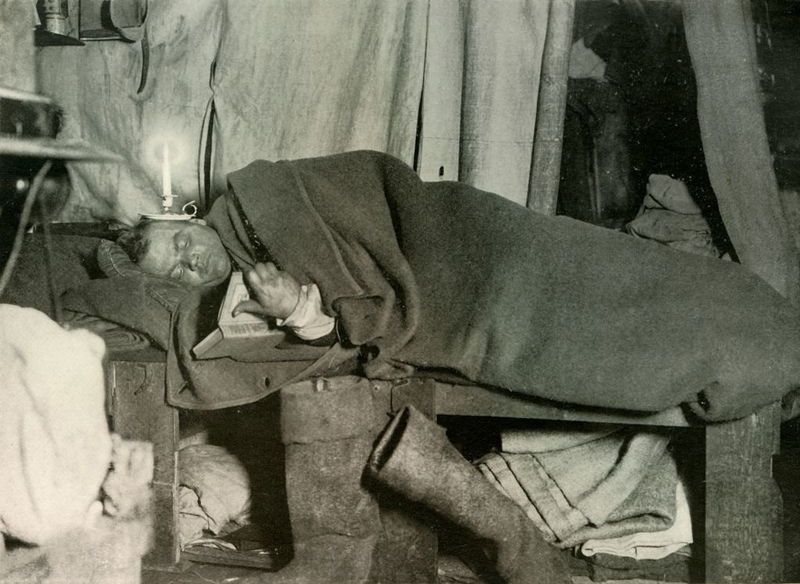
Additionally, mosquitoes and flies posed constant nuisances and health hazards. As towns were often situated near streams, homes constructed with limited resources became susceptible to infestations of maggots and mosquito larvae, further compromising the already poor living conditions of the era. Definitely something they don't emphasize in the old Western movies.
Cowboys Had Soap, but They Didn’t Much Use It
Native Americans were reportedly surprised by cowboys’ lack of hygiene. Cowboys were surprised by Mexican women’s clean and lustrous hair. One cowboy was so impressed he documented the details about how native women would wash their hair with soap weed, a sort of shampoo he described as being harvested from the root of the Yucca plant.
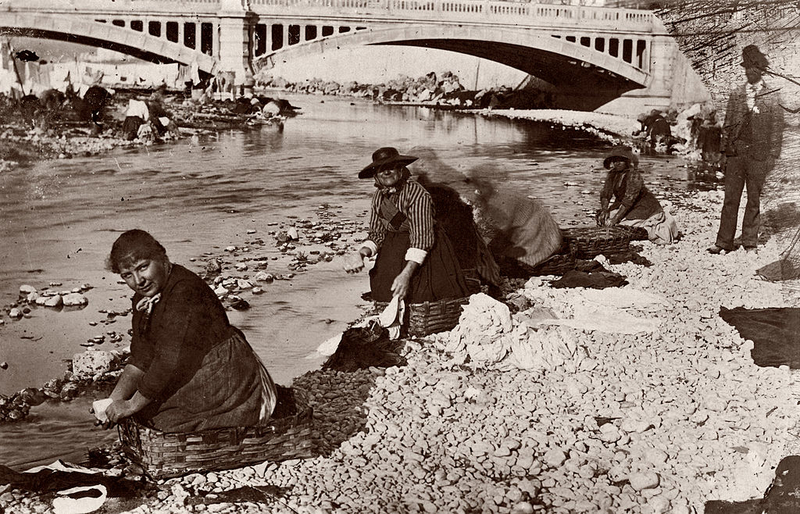
Cowboys rarely bathed. They could go an entire winter without bathing. Monthly, they might take a dip in the creek to clean off. They were not worried about body odor; it was just accepted as a part of life. It makes sense for such a rough-and-tumble kind of life, but it must have been quite a culture shock to other societies they faced.
Wild West Women Preferred Cleanliness
Women, for their part, bathed every couple of weeks and washed their faces daily. The soap they had was made out of animal fat, and its ingredients made it harsh on the skin, but it was all they had. It was also harsh on the hair, so women cleaned their hair just once a month. Shampoo wasn’t available until the 1920s.
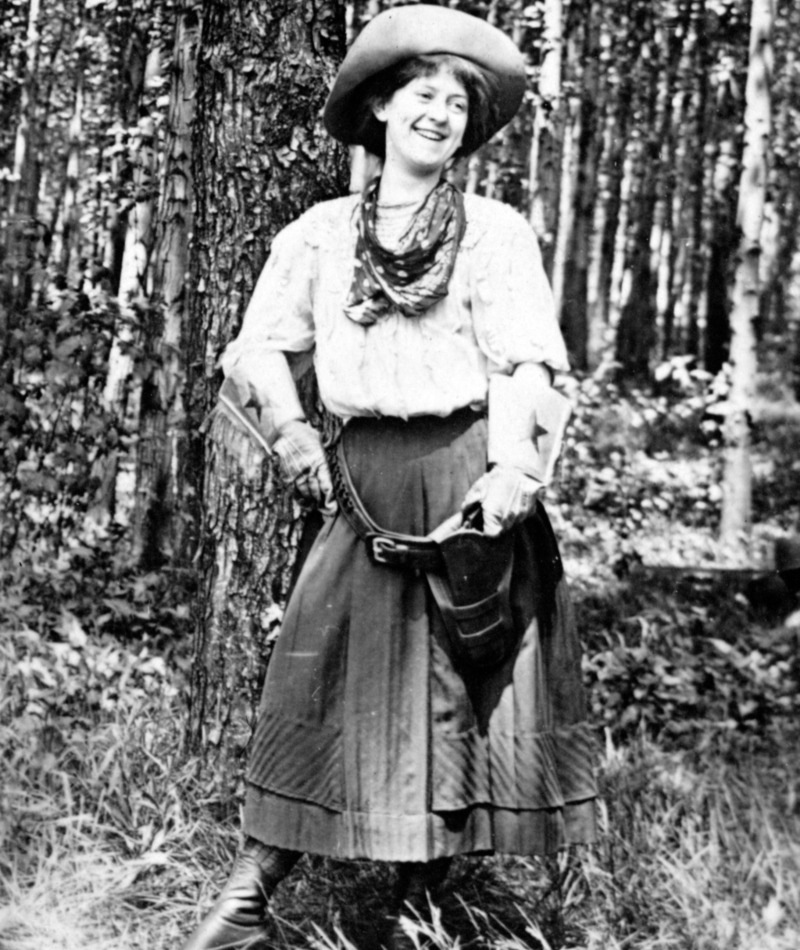
It was stylish in this era for women to have very fair complexions. Hats, gloves, parasols, and long sleeves helped protect their skin. Some women in this era would whiten their facial complexion with bleach made of toxic substances, but cowboy women were lucky just to keep their skin covered. Strange to think that all their good work protecting their skin from the sun was undone by putting literal bleach on their faces, but that's just the reality of no scientific research.
Water Was Scarce
The scarcity of bathing opportunities in the Wild West can be attributed in part to the shortage of water. Water was a precious resource, often in limited supply. Some families resorted to rationing a single tub of water for weekly baths, with each member taking turns and sharing the progressively dirtier bathwater. Compounding the issue, the available water was not always safe to drink.
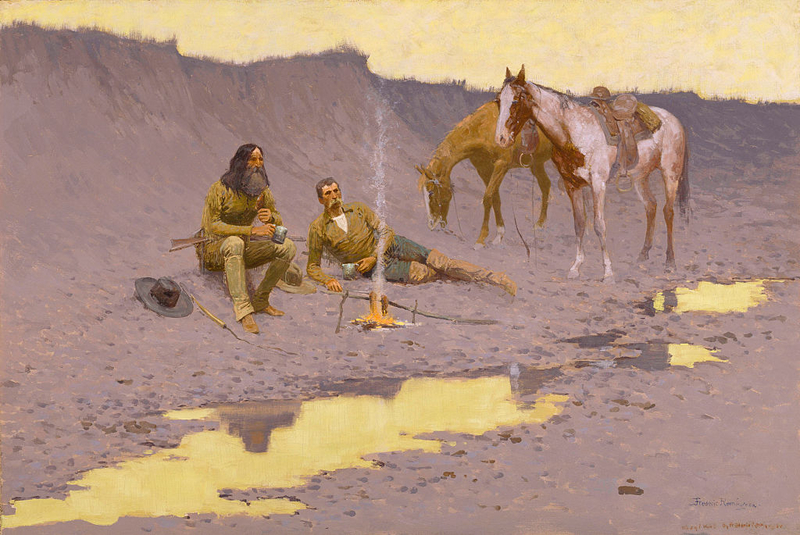
Creeks and streams could easily become contaminated by upstream latrines, while rainwater stores were susceptible to dust and insect larvae pollution. Standing water, a breeding ground for mosquitoes was almost inevitably spoiled by the presence of larvae. In the arid and dusty landscape of the Wild West, water scarcity and compromised quality made maintaining personal hygiene an ongoing challenge.
The Dustiest Place in the World
The American West was a dusty place, but horses, carriages, and people really kicked it up to unbearable levels. On top of that, dust storms would pop up at any given time, and clouds of dust and strong winds whipped dusty dirt into people’s houses and threatened the lives of settlers and livestock.
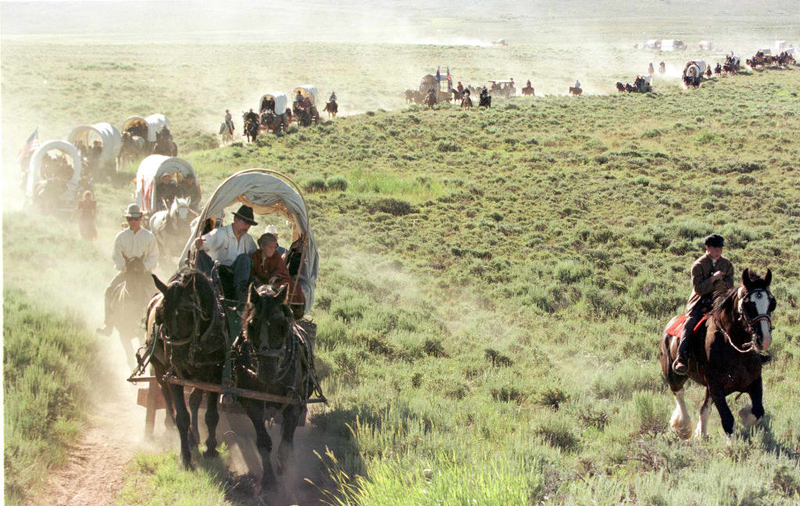
Sarah Raymond Herndon, a girl from Missouri who traveled to the Montana territory in 1860, wrote, “Oh, the dust, the dust; it is terrible. I have never seen it half as bad; it seems to be almost knee-deep in places.” She went on, “When we stopped, the boys’ faces were a sight; they were covered with all the dust that could stick on [. . .] their appearance was frightful.”
A Hole in the Ground
People living in the Wild West had to make do. Instead of a bathroom, frontier folk settled for an enclosed shed sitting atop a hole in the ground. Once that hole had filled with excrement, the outhouse was simply moved over top of a new hole.
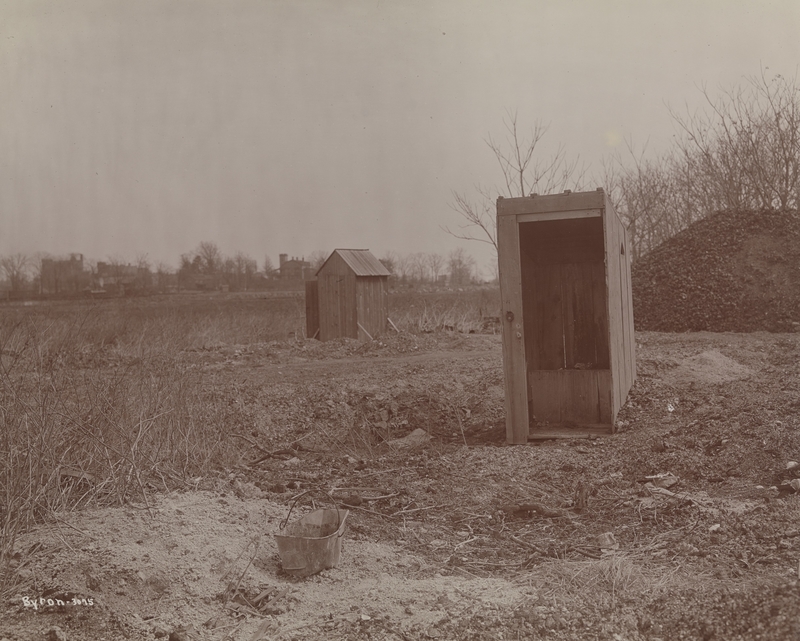
Each hole was covered with dirt before the shabbily built structure was moved. You can imagine the stench and the swarm of flies. Toilet paper was another problem. To make do, leaves, grass, and corn cobs might be used for wiping. Risks included sitting on a black widow spider. And, of course, small children falling in.
The Surprising Uses of Whiskey
Cowboys were known to drink, whether with other chaps at the saloon or from their whiskey stash at home, it was a popular pastime. However, whiskey was also used as a disinfectant and a pain reliever. One of the most surprising uses was as a sort of make-shift shampoo. Whiskey, castor oil, and lavender for scenting were mixed, applied to the hair, and then rinsed with rainwater.
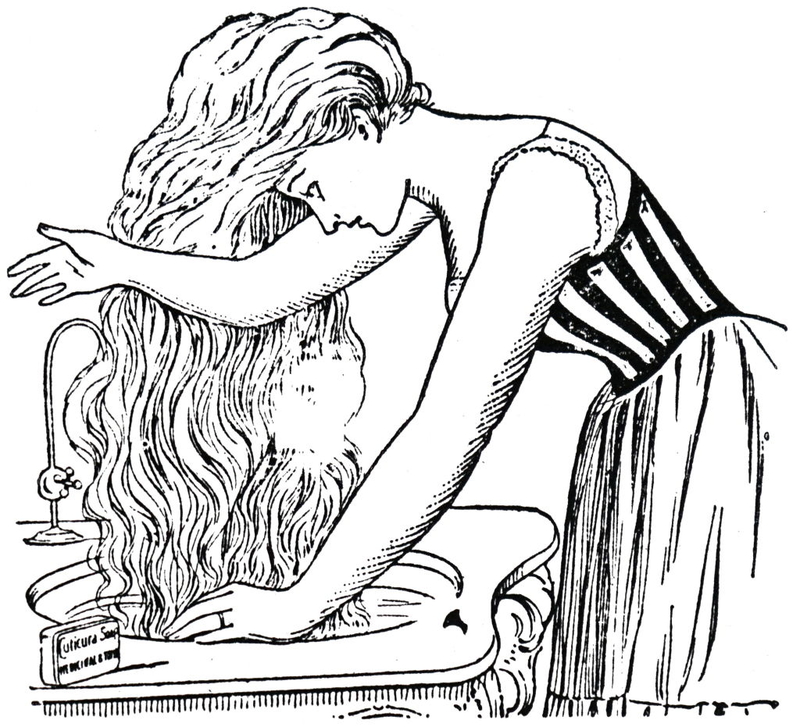
Some ladies combed their hair out nicely and curled their locks, wrapping tresses in rags or with pins overnight. Another method required heating metal curling tongs on the stove and wrapping the hair into curls, a method similar to using a curling iron. Granted, it was probably a lot less safe than modern curling irons, but the idea had to come from somewhere.
Frontier Women Stayed Cleaner Than Men
Maybe it’s because they had more time at home, or perhaps cleanliness was more important to women, but women cared more about their appearance and overall hygiene. Cowboys and soldiers were required to go off for periods at a time. Women kept the homestead. If a woman were lucky, she would have soap-weed to wash her hair, but if not, she would find ways to stay clean.
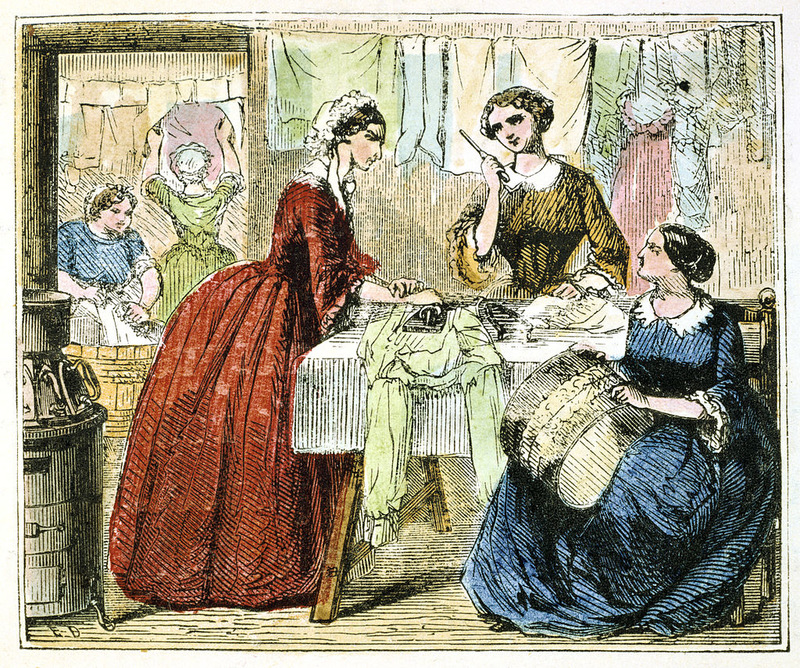
Sarah Raymond Herndon, the pioneer woman who wrote about her experience crossing the Plains in wagons, described her morning routine. She would go down to the spring for a drink each day. She said, “[I] bathed my face and hands in the cool water, picked a bouquet for the breakfast table, and returned to camp.”
Men Shared Bar Towels
In the Wild West, understanding germs and microorganisms was limited or nonexistent. As men frequented saloons, they would reach for towels hanging beneath the bar on hooks whenever they needed to wipe their beards or clean up spills. These towels became communal items, passed from one patron to the next, with no thought given to hygiene. Given the scarcity of water, laundry was rare, resulting in these towels rarely being cleaned.
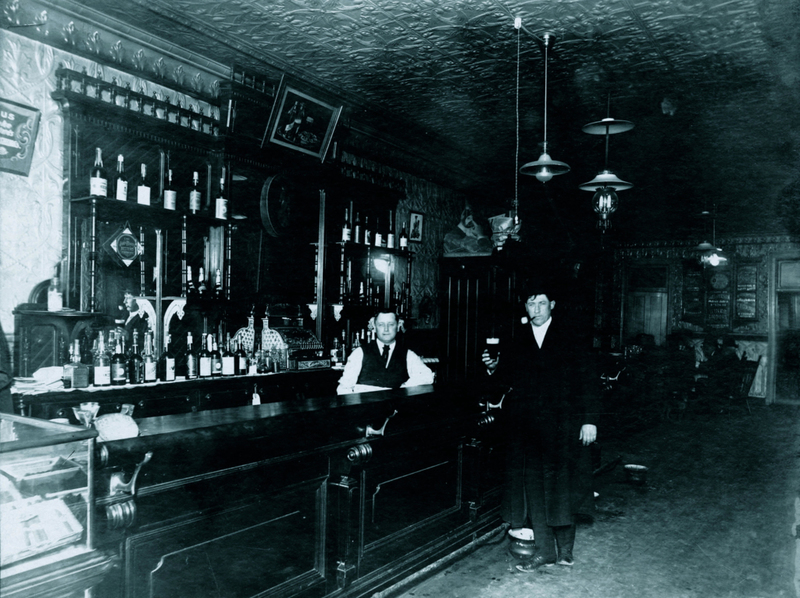
They harbored a multitude of bacteria and became breeding grounds for potential infections. The shared use of unclean towels further contributed to the spread of germs, highlighting the stark contrast in hygiene practices between the past and the present.
Men Wore Long Hair
Given the overall disregard for personal hygiene among men in the Wild West, it comes as no surprise that they paid little attention to their hair. Out on the trail, there were no means to cut or style their hair, and time was of the essence. Furthermore, long hair was preferred among frontier men, with some even adding scented hair tonics like cinnamon oil to their flowing locks.
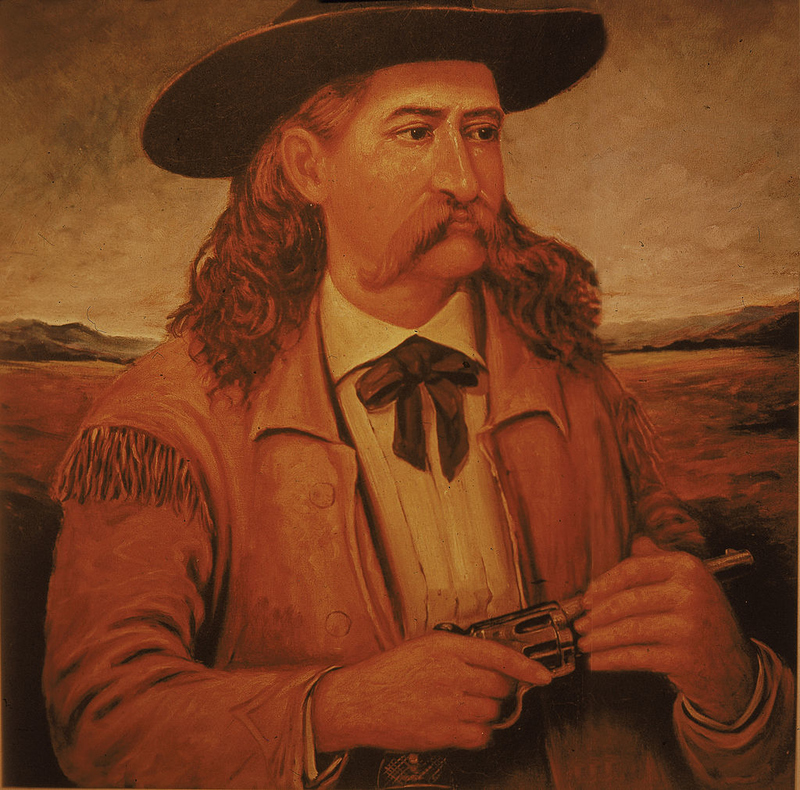
However, when cowboys ventured into town, they would often take the opportunity to pamper themselves. This could involve indulging in a stylish haircut and a clean shave, along with treating themselves to a hot bath, enjoying good food, and donning clean clothes.
The Wild West Teemed with Disease
Due to water shortages and the lack of sanitary conditions, disease ran rampant on the frontier. Cholera outbreaks continued through the 19th century. Sarah Raymond Herndon made a note when illness gave her people a break, “There is no sickness in camp at all; it is marvelous how very well we are. I hope it will continue so.”
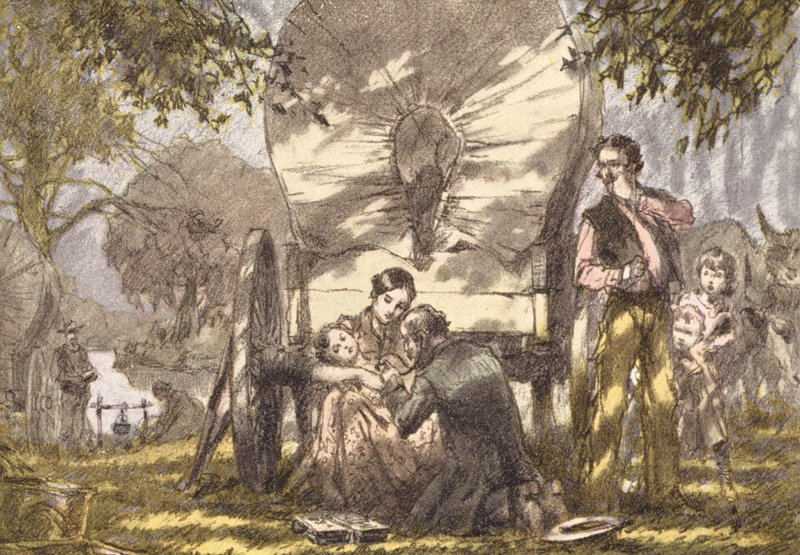
Native Americans also succumbed to the diseases of the white man. An outbreak of cholera among Mormon migrants killed untold numbers of people living in states, territories, and unclaimed lands. The West was wild, so no one knows how many souls perished from epidemics like cholera.
Handkerchiefs Were Not Just Western Movie Props
Cowboys in the old west actually used handkerchiefs for reasons other than robbing banks. For one thing, the dust was terrible. In the days when medical masks were obviously not yet invented, kerchiefs had to do. Bandanas protected skin from sunburn. They were used to tie back hair. Cowboys also wore them around the neck.
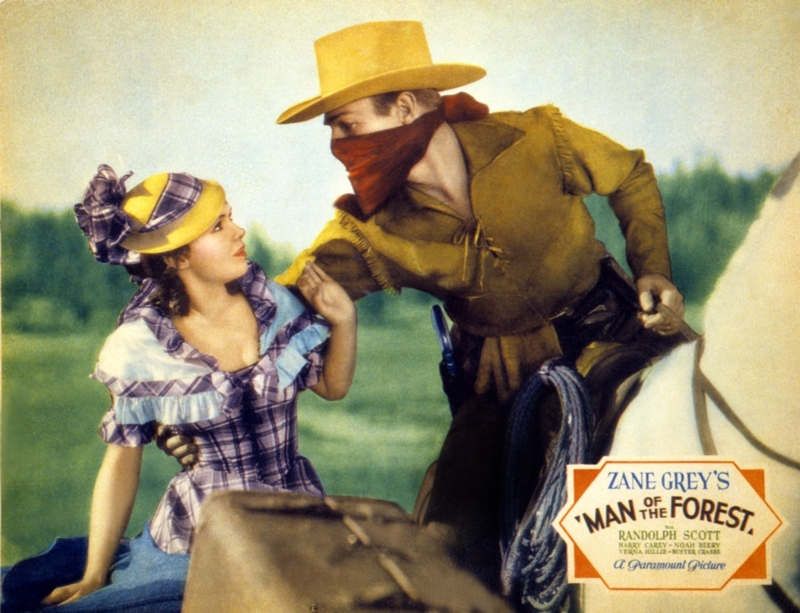
The wipe, as he called it, could be employed for any number of uses. In the winter, it protected from icy winds, in summer, around the head, it served as a sweatband to his cowboy hat. A kerchief could also tie off a wound. It was also used as a hanky for blowing his nose. The bandana was indispensable.
The Cowboy’s New Look
Towards the end of the 19th century, shorter hairstyles started to gain popularity, and even burly frontiersmen began to embrace this new trend. The rugged, unshaven appearance made way for a more polished and clean-cut look. Outlaws like Jesse James and William "Curly Bill" Brocius became known for their suave and well-groomed hairdos. This transformation was partly influenced by the availability of a growing range of hair care products, which encouraged men to experiment with different styles.
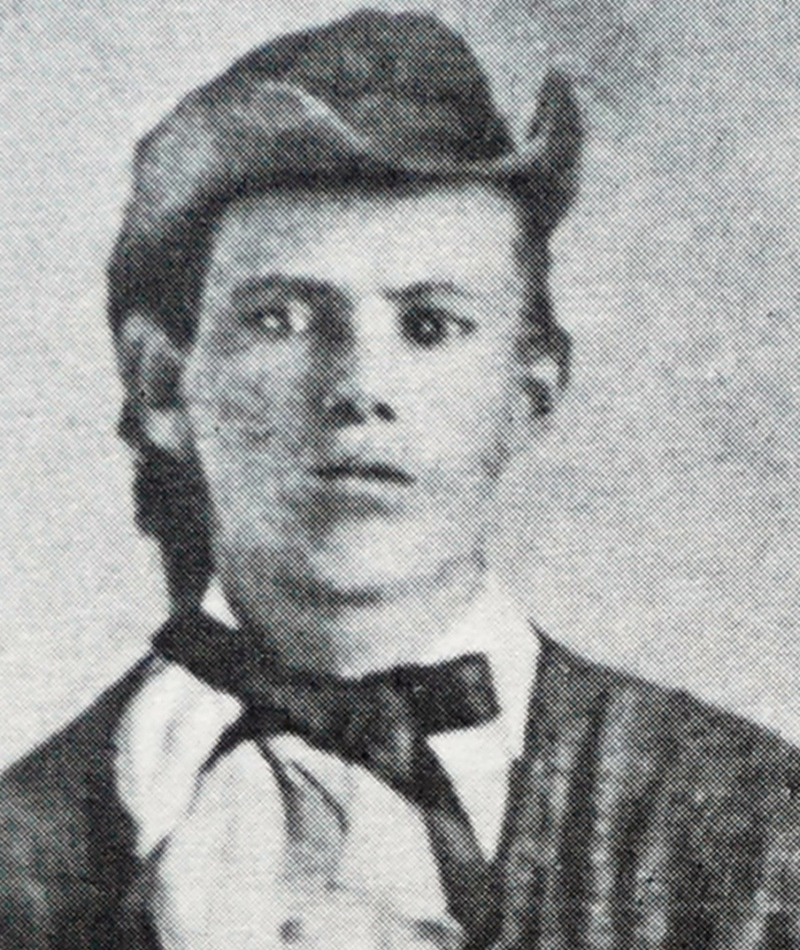
Additionally, the changing perception of hygiene played a role in shaping the modern look. Men started to entertain the idea that their long beards and untamed hair could potentially harbor germs, prompting them to embrace shorter, neater hairstyles to maintain cleanliness and adopt more modern grooming practices.
Dental Care in the Old West Was Like Medieval Times
Dentists were few and far between out in the American territories. Tooth problems were solved at the barber shop or by the blacksmith, where they would just yank the painful problem. Some tough guys would pull out their own teeth. It was crazy. Accidental extractions of the wrong tooth were not uncommon. Whiskey was on hand to help, either by applying it to the gum or by drinking enough to numb the pain.
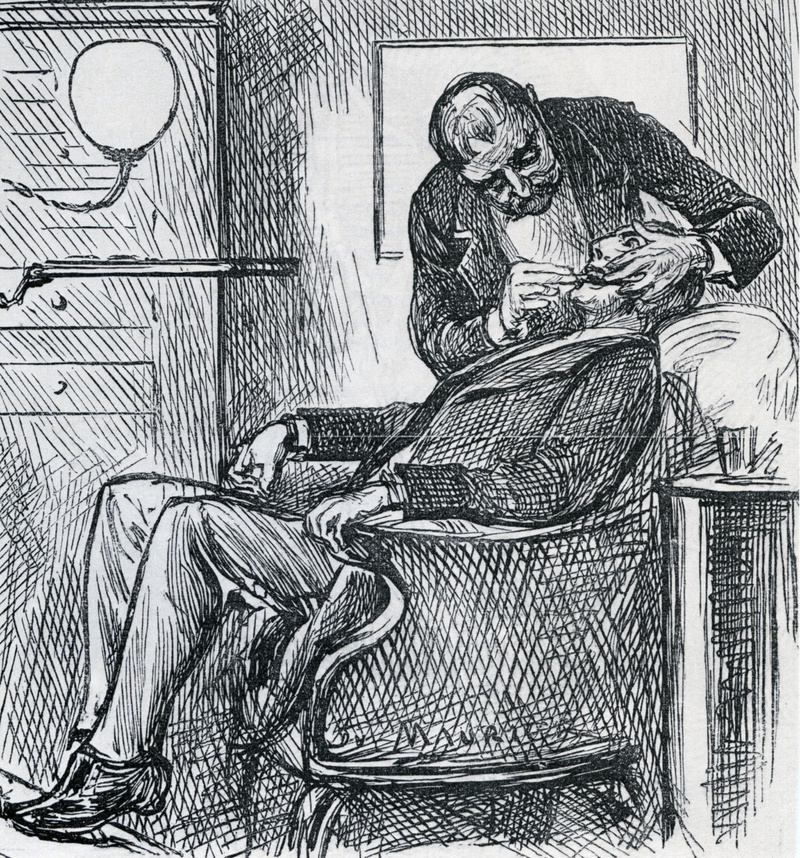
Though there were only three dental schools in the U.S. after the Civil War, the Western hero Doc Holliday was trained as a dentist and practiced in Dodge City, Kansas. He was highly skilled, it is said, but he was one of the very few dentists. In general, it was the extraction tools of barbers and blacksmiths that cured dental maladies. On average, western folk were toothless by age 50.
Cowboys Were Plagued with Fungal Infections
The cowboys in the Wild West had to deal with some seriously itchy and uncomfortable fungal infections. Since they spent months on their trusty horses without much chance for a good scrub, these pesky diseases were bound to pop up. The armpits, crotch, buttocks, and feet were the prime spots for these annoying infections to strike. Imagine the constant itching and burning!
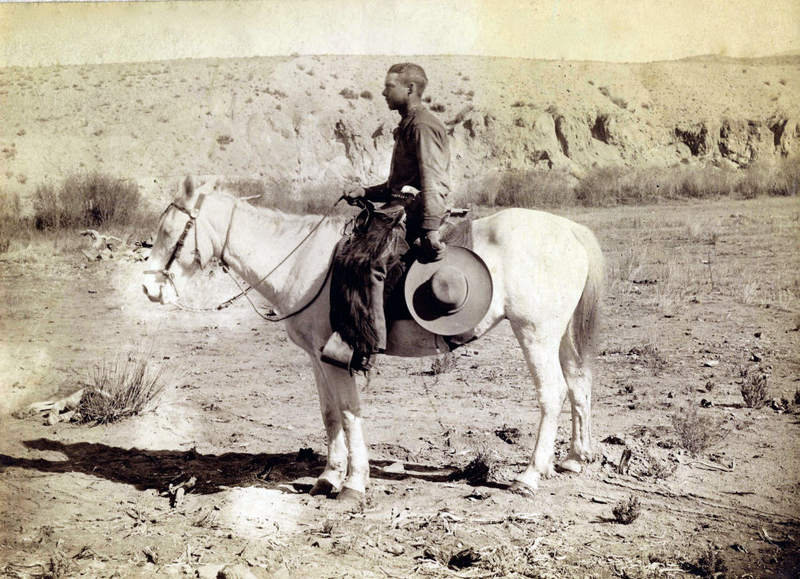
To make matters worse, there weren't any cures available, so they just had to suffer through it. And if they couldn't resist scratching, well, that only made things worse as those pesky fungal spores spread even more. Phew, let's be grateful we don't have to deal with that as modern folks!
Cowboys Had the Reputation of Smelling Like Their Horse
Being a cowboy in the Wild West came with a pungent downside: the constant, lingering smell. With limited access to bathing facilities and spending days on end exposed to the elements, the horse's and its rider's odors would inevitably blend together. To make matters worse, cowboys were prone to developing Staph and impetigo infections from cuts and sores on their skin, which emitted an unpleasant stench.
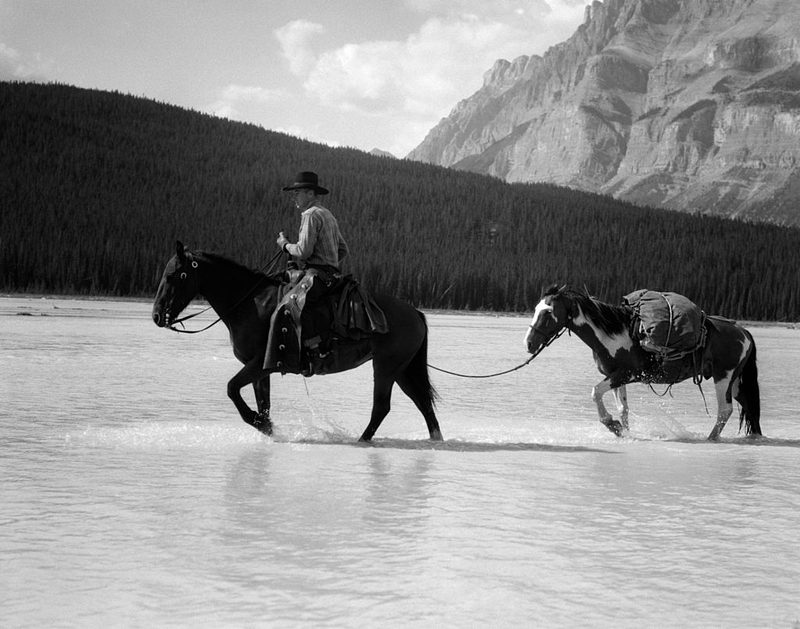
Fortunately, these infections weren't usually life-threatening, but they were highly contagious and became an ongoing part of cowboy life. So, not only did the cowboys have to contend with the rugged conditions of the trail, but they also had to endure the unrelenting aromas that accompanied their adventurous lifestyle.
Education Was Not a Thing on the Frontier
Not only did people out West have no education or knowledge of transmitted diseases, but they also had no hope of a cure. And there was a lot more hanky-panky out West than most people assume. Saloons allowed women in those days and employed them for entertainment, dancing, and serving whiskey. Women often married clientele or, just as often, were beaten by drunken cowboys. Brothels also flourished.
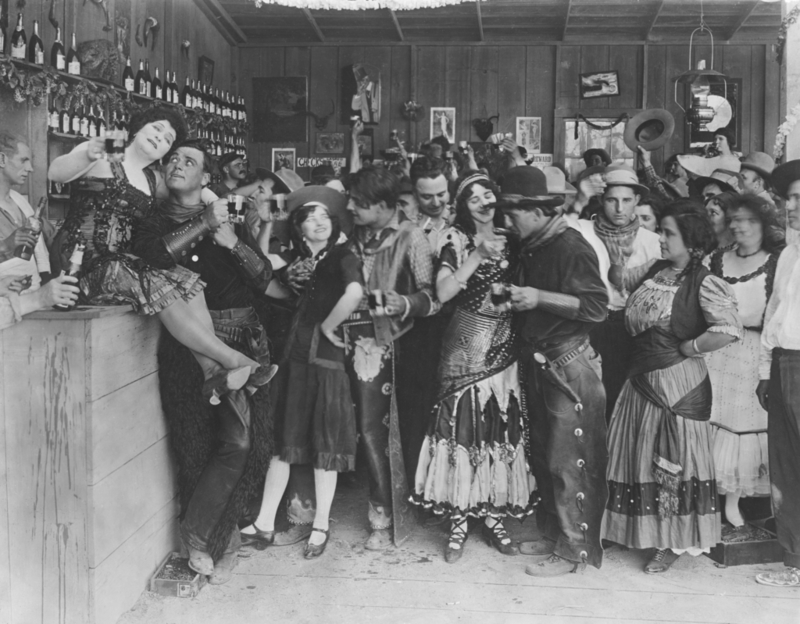
With a 1 to 3 ratio, men outnumbered women creating a shortage of marriageable women and a higher demand for intimacy. Hygiene practices, or the lack thereof, helped spread all kinds of diseases like tuberculosis, which they called consumption. Syphilis was the most common STD in the Old West.
Cowboys Liked Their Liquor Hard
The stronger, the better. “Firewater” was a common nickname for their drink. And they made sure their booze was potent. To be certain, cowboys spit the booze in the air and ignited it, if it didn’t explode in flames, they got their money back.
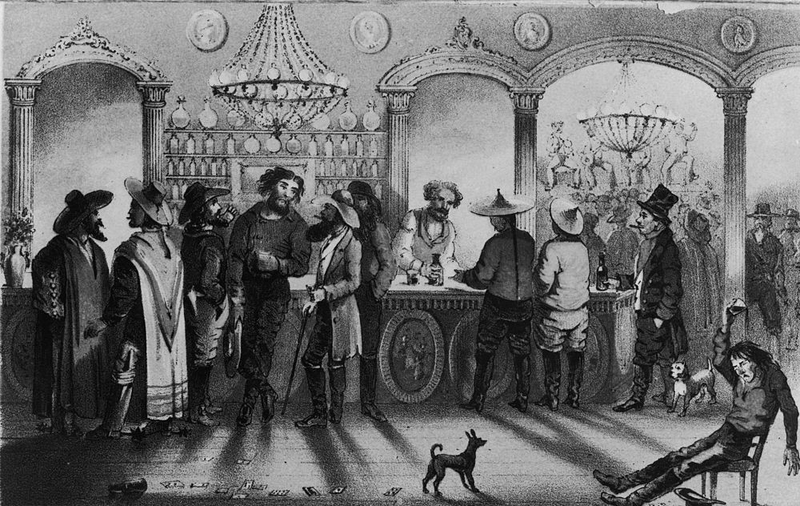
Besides straight whiskey, one beverage preferred by Westerners was a cocktail of burnt sugar, alcohol, and chewing tobacco which had a very high alcohol content. Cactus wine was another popular drink. It was made by combining tequila with peyote tea. One can only imagine how wasted these people got every day getting by. But, just going by the statistics of deaths at bar fights, you can get an idea.
Food Was Plentiful Out West
Frontier folk went without clean water and basic hygiene, but there was no shortage of food. Buffalo, squirrel, rabbit, and other game were shot and killed for meals. They stored stocks of dried beans, flour, sugar, and oats. Foods like meat and fruit were dried for long stints on the trails. Beans were the most common food for traveling cowboys.
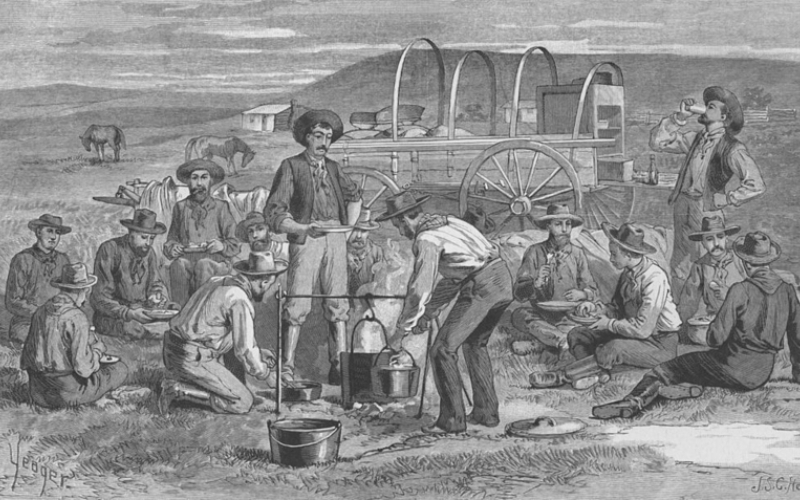
Food was cooked and served for breakfast and supper using Dutch ovens, frying pans, boiling pots, and other devices. Special treats included fruits, vegetables, and sarsaparilla. Produce like fresh corn, tomatoes, apples, and squash were devoured with abandon. When you think about it, they didn't have it all that bad.